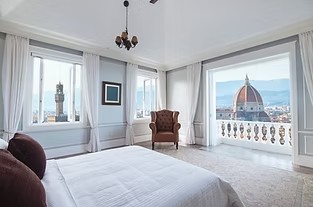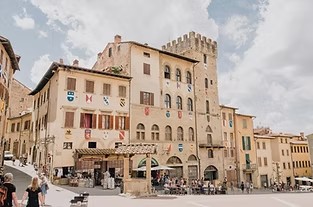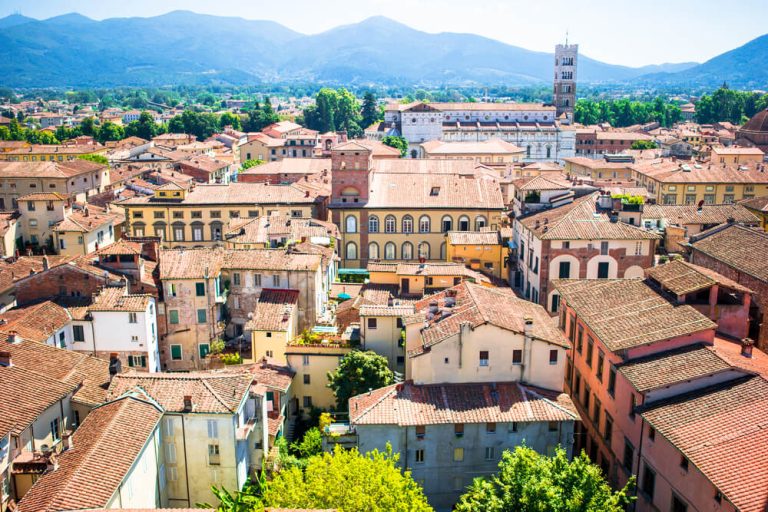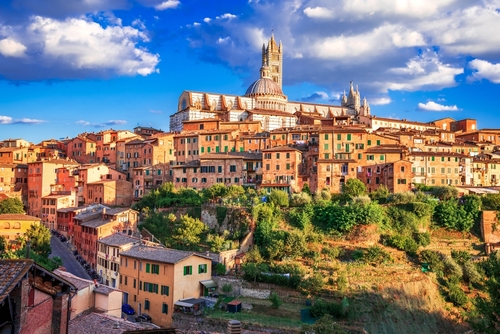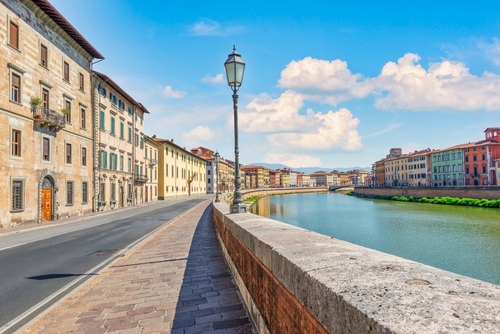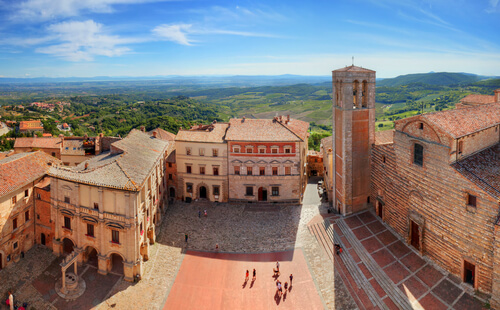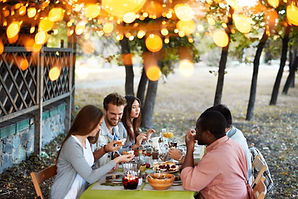Tuscany
Travel Guide
Everything you need to know
Where is Tuscany
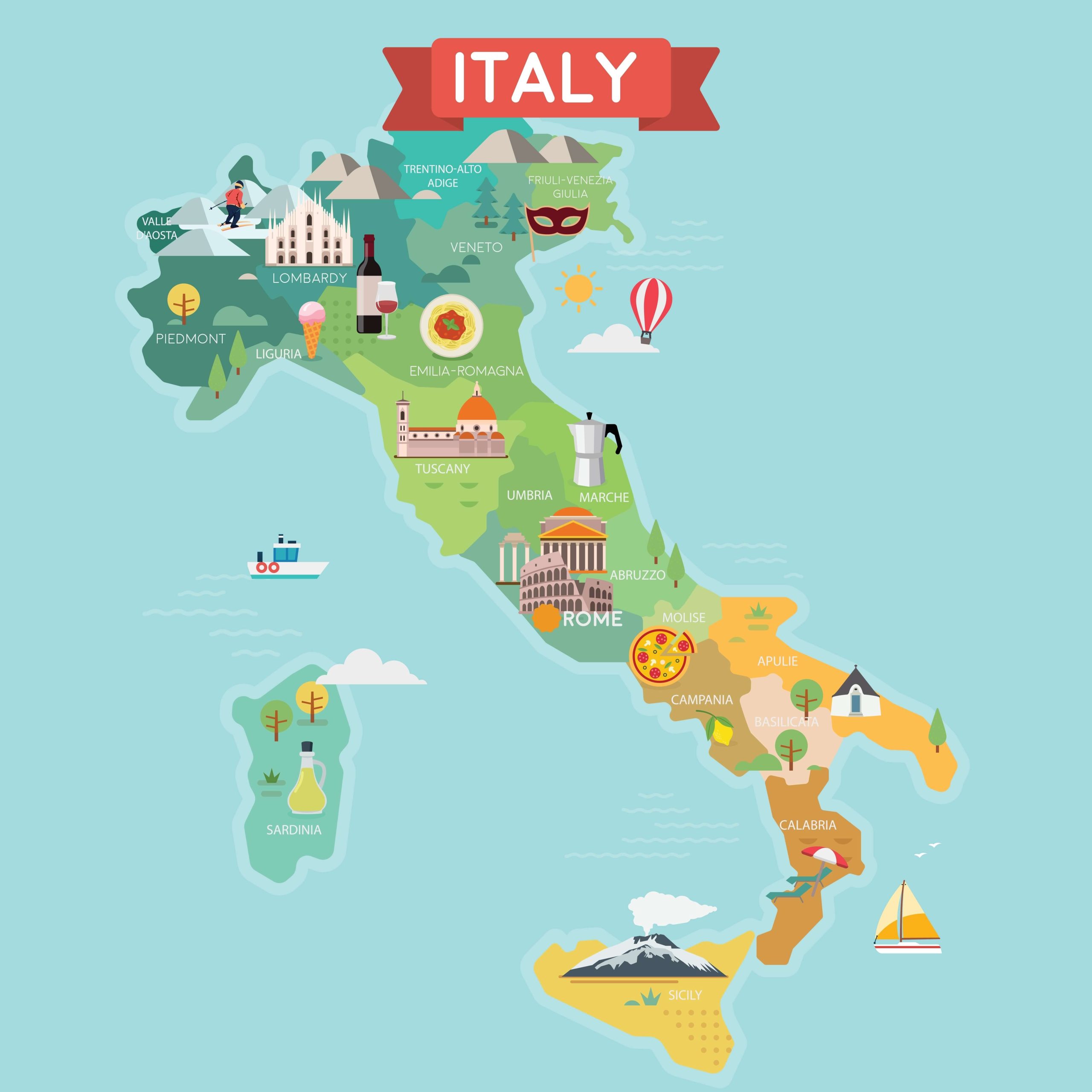
How to get there
Tuscany is very easy to reach either using public transport or by car. It is a very competitive route meaning that travel costs don’t need to break the bank either.
By Plane
Tuscany is served by two main airports – Pisa (Galileo Galilei International Airport) and Florence (also known as the Amerigo Vespucci Airport or Peretola). However, dependent on where you are planning to stay, you may also want to look at flying into other airports nearby. Bologna airport, for example, is just over 100 kilometres from Tuscany’s capital city, equivalent to a 90 minute drive. And in the other direction, Rome is less than a 90 minute drive from the Grosseto region in southern Tuscany. Or, Perugia in neighbouring Umbria is less than an hours drive from the Tuscan border.
If landing in Pisa, there are train links from the airport to Pisa’s city centre. If arriving in Florence, a tram links the airport to the city. A taxi from Florence airport to the city centre costs approximately €30. Or you can also opt to catch an ATAF bus or take the tram. This costs just a couple of euros and the journey with take approximately 25 minutes. From Pisa, it’s a fixed fare of €10.80 to the Piazza del Duomo or €14.50 to the train station.
By Train
Italy is one of the most rail-friendly countries in the world. Some of Italy’s most impressive and scenic train journeys cross over its borders to countries in the north. For example, the route through the Brenner Pass links Munich with Venice. And there are also rapid train services between Milan, Turin and Paris. And there is an overnight train between Vienna and Rome too.
Once arriving in Italy by train, it’s then easy to go on to reach Tuscany’s capital city of Florence by train too. Using the fast train service from Rome, Venice or Milan, you can be in Florence in less than two hours and if travelling from Naples or Turin, it will only take three hours to reach Florence.
Find out all train times, prices and book tickets at Trainline. Or find out more about train travel in our handy guide to travelling by train in Italy.
By Car
If you are coming to Tuscany from outside Italy, then there are three main points of entry into Italy by car. These are the Mont Blanc tunnel from France, the Grand Saint Bernard tunnel from Switzerland and the Brenner Pass from Austria.
Once across the border in Italy, the country has a good road network. If you’re looking to get from A to B quickly, then it’s worth using the Italian Autostrada. These are fast roads but you do have to pay to use them. Toll booths will either require immediate payment or ask you to take a ticket, in which case payment will be made when you exit the motorway. Payment can usually be made using either a credit card or in cash. Just make sure you choose the correct lane – telepass or biglietto. The telepass is a device that will automatically deduct the toll from your bank account. The likelihood is that you won’t have one of these so instead you should opt for taking a ticket (biglietto).
The main north-south link road through Tuscany is the Autostrada del Sole which runs from Milan all the way down to Reggio Calabria. The A1 links Florence to Bologna in the north and with Arezzo and Rome in the south. There is also a fast road that leaves the A1 at Firenze Certosa and connects Tuscany’s capital to Siena. And the A11 connects Florence to Prato, Pistoia and Lucca before joining with the A12 which heads along Tuscany’s coastline to Genoa. You can check real time traffic information and journey times using the network of Italian autostrade here.

How to get around Tuscany
Once you have arrived in Tuscany, you have a few options about how to get about during your holiday. We do usually recommend hiring a car – even if you don’t use it every day, it will give you so much more freedom and allow you to explore parts of Tuscany that may be hard to reach using public transport. However, it’s good to understand all the options open to you.
Public Transport
If you’re travelling between larger towns and cities in Tuscany and are looking to use public transport, we would usually recommend you opt for the train. There are four major rail networks in Tuscany. The fastest of these is the Milan-Florence-Arezzo-Orvieto-Rome line. The second runs along the Tuscan coast between Genoa, Pisa, Livorno and Rome. There is then a route which runs from Florence to Viareggio, stopping in Prato, Pistoia, Montecatini Terme and Lucca on the way. And there is a line between Florence and Pisa which stops in Empoli and Pontedera.
However, many of the smaller towns and villages either don’t have train services at all, or are better served by buses. Certainly, if you’re travelling around the Chianti area or the Val d’Orcia by public transport, buses are the only viable option.
Travelling by bus will certainly allow you to visit a more hidden, less crowded and undiscovered side of Italy. They also often offer a cheaper mode of travel if you’re on a budget. And buses are usually equipped with WIFI, air conditioning and power outlets to still enable you to travel in comfort.
There is no national bus network in Italy. Most buses are regional. And, even within the same region, there can sometimes be multiple companies operating.
The main bus companies in Tuscany are Bus Italia – SITA , CAP and Tiemme. Bus Italia – SITA operates services between Florence and the areas of Arezzo, Casentino, Chianti, Mugello, Siena and Valdarno. Incidentally, this is the quickest way to travel between Florence and Siena. CAP connects Florence with the area around Mugello, Prato and Pistoia. Tiemme is the bus company that covers southern Tuscany. It runs services around Arezzo, Certaldo, Grosseto, Maremma, Piombino, San Gimignano and Siena.
In Florence itself, the ATAF (Azenda Trasporti Area Fiorentina) provides services in the city centre. Tickets can be purchased at the local tobacconist or at the ATAF information office in front of the train station. If you wait to purchase a ticket once on board, you will pay almost twice as much for your journey.
Renting a car and driving
There are a number of benefits to driving a car in Tuscany. Not least, it allows you to explore Tuscany at your own pace. It also enables you to fully discover Tuscany’s picturesque rural landscape and its smaller hilltop towns and villages. Expect to enjoy breath-taking panoramas around every corner!
There are two types of main roads in Tuscany – the motorway (autostrada) and the state roads (superstrada). The autostrada are toll roads indicated by green signs. The superstrada are indicated by blue signs and are free to travel on.
However, we recommend when driving in Tuscany, you actually take the state roads (strade statali), which are indicated on maps as either S or SS, or the provincial roads (strade provinciali) represented by an SP. The latter are often small country roads. Whilst it means it will take longer to get from A to B, taking these roads will reward you with some of the most beautiful scenery in Tuscany. Plus it will introduce you to some of the most charming smaller villages dotted throughout the Tuscan countryside.
There are also Strade Bianche (white roads). These are unpaved gravel roads that wind their way through the heart of the Tuscan countryside, past olive groves, vineyards, fields and meadows.
However, there are a couple of caveats when it comes to driving. Drivers should be aware of Zona Traffico Limitato (ZTL). These restricted traffic areas prohibit non-resident vehicles from entering. The aim behind them was to reduce pollution and limit damage to streets and buildings in the historic centres. However, they have also managed to create a much nicer experience for those exploring these historic centres on foot. The ZTL tend to be active during certain hours so you need to read the signage carefully.
Every entrance to a ZTL will be clearly signed indicating that you are entering a restricted traffic area. These signs consist of a white circle with a red border on a white background. The words ‘Zona a Traffico Limitato’ is clearly written above the circle, whilst below there will be information regarding the timing that the restrictions are in place. For example, a sign stating 8.00 – 20.00 would indicate that the restrictions are in place between 8 o’clock in the morning and 8 in the evening. Your rental car will not have a permit to access these areas. Nor will your own vehicle. The only exception will be if you have booked accommodation within a ZTL and your accommodation provider has already informed you that you are able to enter the area and have already taken a note of your car registration plate. If in doubt, check with them before entering.
Entrances will also be marked by security cameras. These will immediately record your registration number if you enter and a fine will be issued should you be breaking the restrictions. In fact, you can be fined multiple times – each time you pass a security camera, you can get a new fine. Since fines can be up to €300, it’s a costly mistake to make! Don’t think it’s OK to enter if you happen to see other vehicles inside the area either. Residents are normally allowed to enter as is public transport. And don’t be fooled by what your GPS or SatNav system might be telling you to do. They don’t always inform you that you’re entering a restricted traffic zone.
Drivers should also be aware of reserved lanes when driving in Florence. These are lanes reserved for use by public vehicles such as buses, ambulances, police cars, taxis and postal vehicles. Again, should you use these, expect to receive a fine, sometimes months or even years after the occurrence took place.
In reality, even when access is permitted, driving in city centres or even in the historic centre of towns in Tuscany can be stressful. As a result, you may want to consider parking on the outskirts of the town and walk in.
Many of the streets in Tuscany are narrow and don’t provide much room for cars to pass. As a result, if parking on the roadside, we recommend you put your wing mirrors in to minimise the chances of damage to your vehicle.
Cities and Towns in Tuscany
Tuscany’s towns and cities are famous the world over. Their skylines are instantly recognisable and they are filled with an array of sights to see and things to do.
Florence
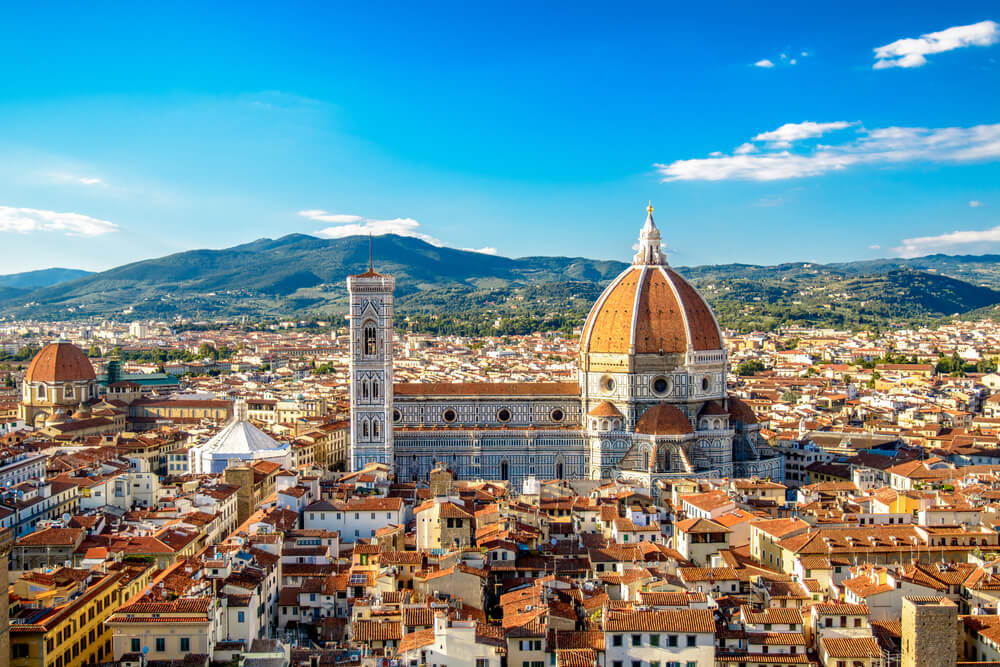
Introduction to Florence
The capital of Tuscany and Italy’s most populated city, Florence is also one of the world’s most iconic cities. The historic centre of Florence was declared a UNESCO World Heritage site back in 1982 and attracts millions of tourists each year. Home to the Duomo, Uffizi Gallery, Palazzo Vecchio, Ponte Vecchio and the Palazzo Pitti, it is a city renowned for its culture and its Renaissance art and architecture. The Galleria dell’ Accademia is home to one of the most famous statues in the world – Michelangelo’s David. And Brunelleschi’s dome atop the Cathedral of Santa Maria del Fiore dominates the Florence skyline. However, Florence is also a city of beautiful gardens – the Iris Garden, Bardini Gardens, Rose Garden and the Boboli Gardens all provide an opportunity for peace and tranquillity in this astonishing city.
Tips for navigating the city
It is easy to explore the heart of Florence on foot. Its historic centre covers an area of approximately 5 square kilometres so everything is certainly within easy walking distance. In any case, many of these central streets are also pedestrianised during the day so going on foot is your only option.
However, if you do need to rest those legs, or if you want to explore a bit further afield, Florence does have a tram network. This connects the city with the airport and with those neighbourhoods outside the historic centre. Contactless payments are accepted on board.
There is also a good bus network run by Autolinee Toscane. A popular activity when in Florence is to head to Piazzale Michelangelo which sits on the hillside overlooking Florence. The views are terrific, particularly at sunset, albeit expect plenty of other holidaymakers to be enjoying it with you. Whilst you can walk there, an alternative would be to take the number 12 bus from Piazza Ognissanti. Or take the number 7 bus from Santa Maria Novella railway station to Fiesole in the outskirts of the city. Fiesole is widely acknowledged to be the most affluent suburb of Florence. It is also home to some incredible Etruscan and Roman remains. Buses are excellent value with tickets costing approximately two euros and are valid for 90 minutes.
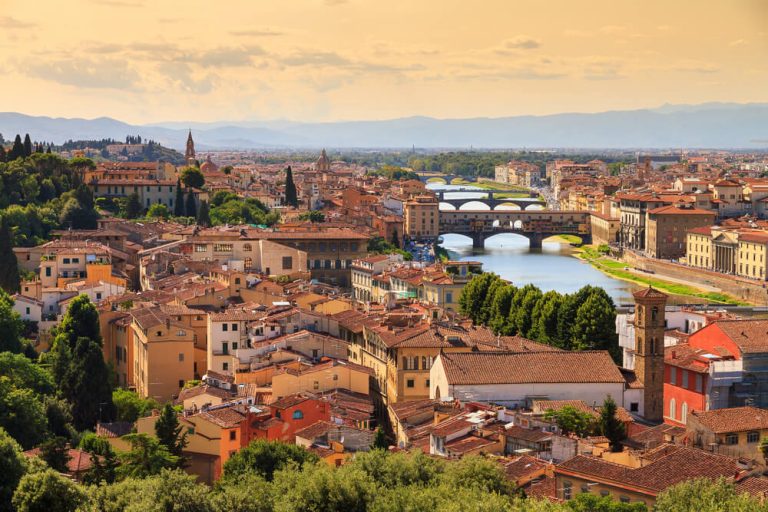
Accommodation and dining recommendations
If staying overnight in Florence, there are plenty of accommodation options on offer, suitable for all budgets. These include hotels in Florence, B&Bs as well as Florence apartments too. Just be aware that, whatever option you choose, you will need to pay a tourist tax. In Florence, the tourist tax applies to all accommodation but the amount depends on the type and rating of your hotel or holiday rental. Typically costs are between €4 and €8 per person per night. Wherever you stay, you will also need to provide a copy of the ID document of each person in your party.
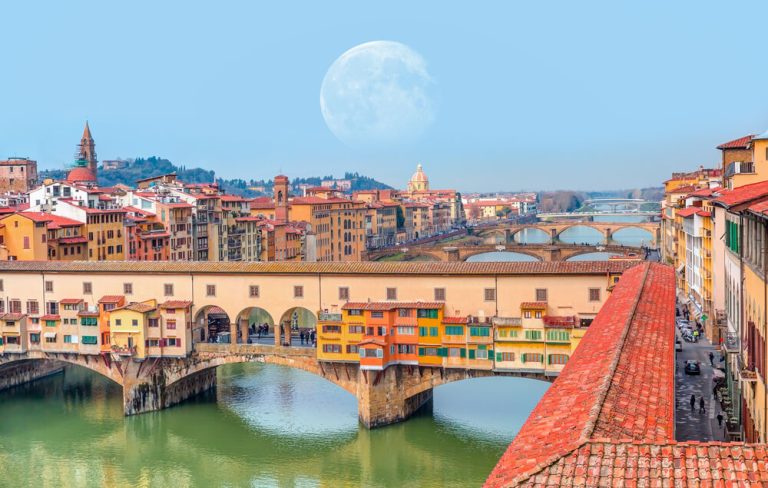
It’s certainly worth spending at least one night in Florence if you can on your Tuscany holiday. That way, you can also make the most of the wonderful bars and restaurants in the city. One of our favourite classic eateries in Florence is Cibreo. The owners have expanded so that they now have a formal restaurant, a more informal trattoria and a café. This is fine dining whilst still retaining a relaxed feel. Or, head to Regina Bistecca to sample Florence’s most famous dish – the Bistecca alla Fiorentina. This is a thick, T-boned steak seasoned with salt and pepper and grilled. Simple but delicious! Or opt to sample Florence’s cucina povera and try the Pappa al Pomodoro (a stew made with stale bread, tomatoes and herbs) or Ribollita (a soup made with stale bread, kale, carrots, tomatoes and other vegetables).
Siena
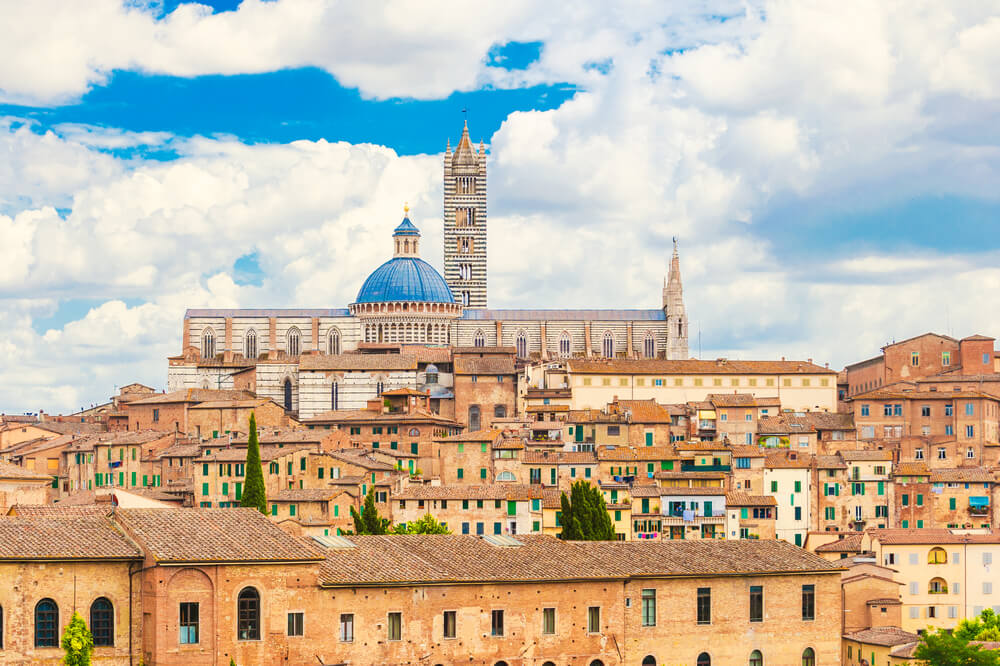
Introduction to Siena
Siena is also famous for its art and architecture. The beautiful Piazza il Campo which is home to 102 metre tall Torre del Mangia is iconic as is Siena’s stunning Duomo. The Duomo’s striking black and white marble façade is as stunning as its interior. Inside, there are incredible frescoes by Pinturicchio as well as works by Pisano, Donatello and Michelangelo. And don’t miss what is beneath your feet. Much of the floor will probably be covered up but there should be sections of the beautiful mosaic open for you to view. More artworks are on display in the Museo Civico in the Palazzo Pubblico, in the Museo dell Opera, in the Complesso Museale Santa Maria della Scala and elsewhere.
However, Siena is also probably most famous for its palio. This horse racing event takes place twice a year, once on 2 July and again on 16 August. Each time, jockeys and horses from ten of the seventeen contrade (wards) of the city of Siena complete to be the first to cross the finishing line. The race is a bareback ride that makes it way around the Piazza del Campo three times. The winner is the first horse to cross the line, even if he does so without his jockey!
Tips for navigating the city
Siena is a very easy city to discover on foot, especially as the historic centre is a Limited Traffic Zone (ZTL). In fact, it will only take 25 minutes to walk from one side of the historic centre to the other. However, if coming by car, this does beg the question on where to park.
The good news is that there are plenty of parking areas. There is free parking at Il Campino and on Via Laterina adjacent to the cemetery. Free parking is also available on the roadside at Strada di Malizia and on Viale Mario Bracci. The latter is a little further out though so you would need to then catch the number 10 or 17 bus into the centre.
There are also paid car parking facilities at the Il Duomo car park on Via del Nuovo Asilo, at Il Campo on Via di Fontanella and at Santa Caterina. Escalators from here will connect you to the historic centre. Or you could opt to park at Siena’s train station or at the Fortress car park, both of which are a bit cheaper.
Car park prices can vary a lot although you will find that all parking is free on public holidays. However, despite the number of car parks, due to the sheer number of visitors to Siena, parking is not always easy, particularly in peak periods. As a result, you may also want to consider coming by bus or train.
The train station is at the bottom of the hill in Siena. However, there is an escalator from the station to Via Vittorio Emanuele II and from here it’s a short walk to the historic centre. Alternatively, you could catch a bus from the station to the historic centre instead.
The bus service managed by Autolinee Toscane has numerous routes to the surrounding neighbourhoods, with buses running every 30 minutes. There is also a Pollicino service which runs every fifteen minutes.
And, if coming to Siena from Florence using public transport, then the bus is actually the quickest option. Tiemme run two different bus services from Florence to Siena – the Rapida (fast bus) and the Ordinaria (slow bus). These take 1 hour and 15 minutes and 1 hour and 30 minutes respectively to reach their destination. And Flixbus also run a bus service between the two cities.
Once in Siena, another option rather than using public transport is to opt for the bike sharing service in the city – Si Pedala. There are bike stations strategically located around the city and over 200 cycle routes to enjoy near this UNESCO World Heritage city. Simply download the Weelo app to use the service.
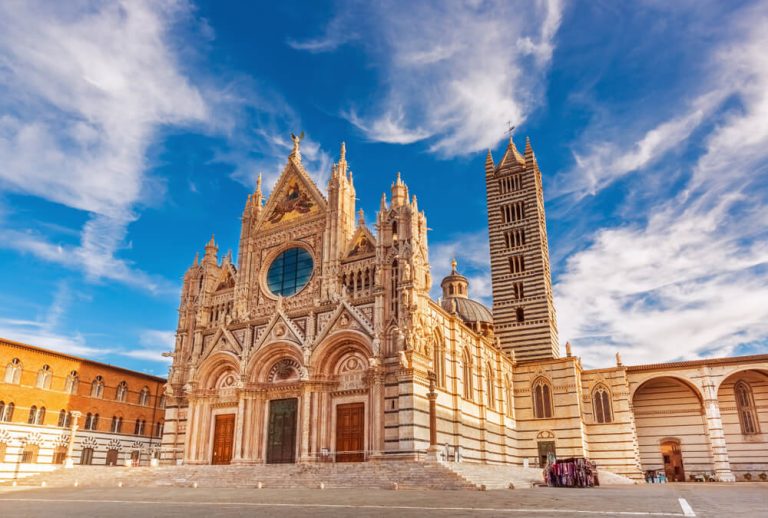
Accommodation and dining recommendations
If staying overnight in the city, you can opt to stay in a hotel in Siena, B&B or a Siena apartment. Those staying overnight will need to pay a tourist tax. This varies dependent on the type and standard of accommodation as well as the time of year. Typically, it is between €1.5 and €5 per person per night. We recommend opting for a Tuscany villa in the Siena countryside though.
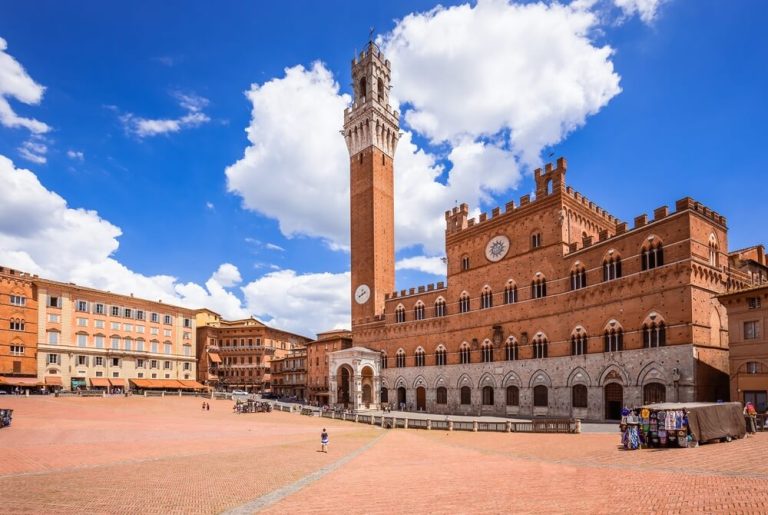
If you want to sample some typical Sienese cooking, then our favourite restaurant in Siena is the Ristorante Santa Caterina da Bagoga. Also worth a try is Osteria le Logge. We recommend ordering a hearty bowl of pici pasta, followed by one of Siena’s sweet treats. Ricciarelli biscuits are a popular dessert in the city. Or the Panforte di Siena is a rich, honey-based cake most commonly enjoyed at Christmas. If you’re in a hurry, and looking for food on the go, then head to Pizzicheria de Miccoli. It’s a visual feast as much as anything but we think their ricciarelli biscuits are some of the best we have ever tasted!
Pisa
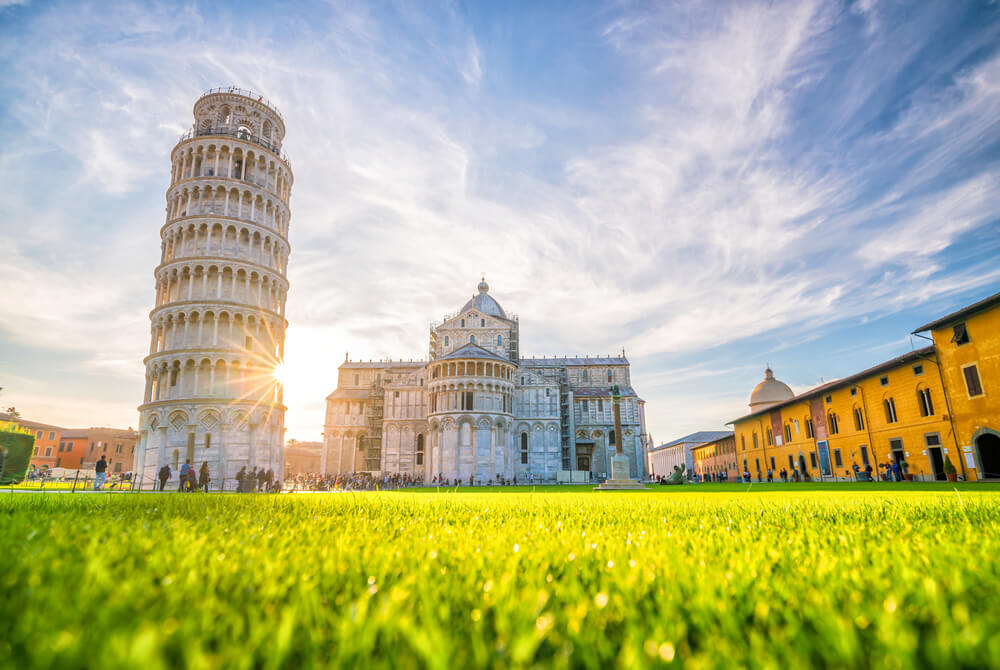
Introduction to Pisa
Pisa is synonymous with its leaning tower! However, there is so much more to Pisa than just the Leaning Tower. Even in the Piazza dei Miracoli, there is so much more to see, not least the Cathedral and Baptistry. Pisa also a rich maritime history, it has been a centre for learning for centuries thanks to its university founded in 1343 and it was the birthplace of scientist Galileo Galilei. Check out our guide to spending 48 hours in Pisa for more information.
Tips for navigating the city
If arriving at Pisa airport and heading into the city, you can either opt for a taxi or, alternatively, take the PisaMover shuttle. This connects Pisa airport with the Pisa Centrale train station. It runs every day from 6 a.m. until midnight, with departures every 5 to 8 minutes. The journey time is just 5 minutes. Pisa does have a second train station – Pisa San Rossore – which is actually closer to the Leaning Tower, however not all trains stop here.
If hiring a car in Pisa, then you will need to find parking in Pisa outside the ZTL. The free park-and-ride on the Via Pietrasantina is a good option. Alternatively, there are also free car parks on Via Pratale and on Via Paparelli, both within walking distance or a quick bus ride to the historic centre. There is also metered parking along some of Pisa’s streets and paid car parking options such as those on Via Cammeo, Via Vecchia Barbaricina and at the Piazza Vittorio Emanuele.
Once in Pisa, you will find that it is a small, easily walkable city. However, if you do get tired, there is a local bus service. Or, another option is to get about on two wheels. Bike rentals are available at Pisa Centrale train station. Or there is a bike sharing scheme with stations throughout the city. However, this isn’t the most user friendly and arguably not worth the effort if only in Pisa for the day.
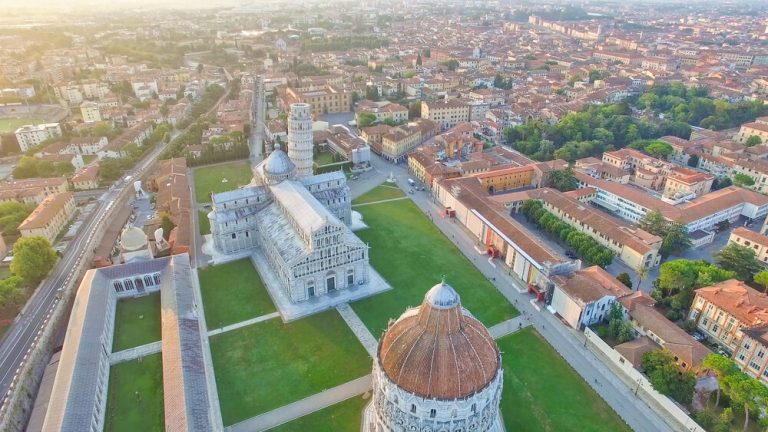
Accommodation and dining recommendations
Expect to eat well in Pisa. Because of its position near the sea, Pisa is well known for its seafood dishes. Some of the most famous include the delicious spaghetti con le arselle (clams), stuffed mussels, salted cod and anchovies. You should also make a point of trying Cecina (a thin, salted flatbread made with chickpeas) and torta coi bischeri (or pilgrim cake as it is also known, that dates back to the sixteenth century and which is made with pine nuts). If opting for a pizza, ask for the Pizza Pisana which is topped with tomato sauce, capers, anchovies and cheese.
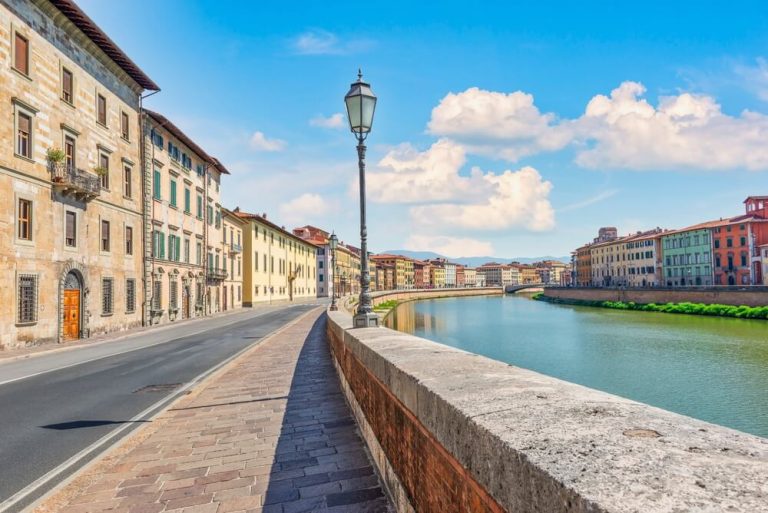
Enjoy an aperitivo in Pisa at either Viavai Café, Arno Vivo or La Gallina Nera. Then head to one of our favourite restaurants in Pisa. Fish lovers should head to Branzo or Offish whilst meat lovers should enjoy Cantina Vasari or Capodimonte. Or for local dishes, opt for Osteria dei Cavalieri, La Pergoletta, Il Mercante or Michelin starred Erbaluigia.
San Gimignano
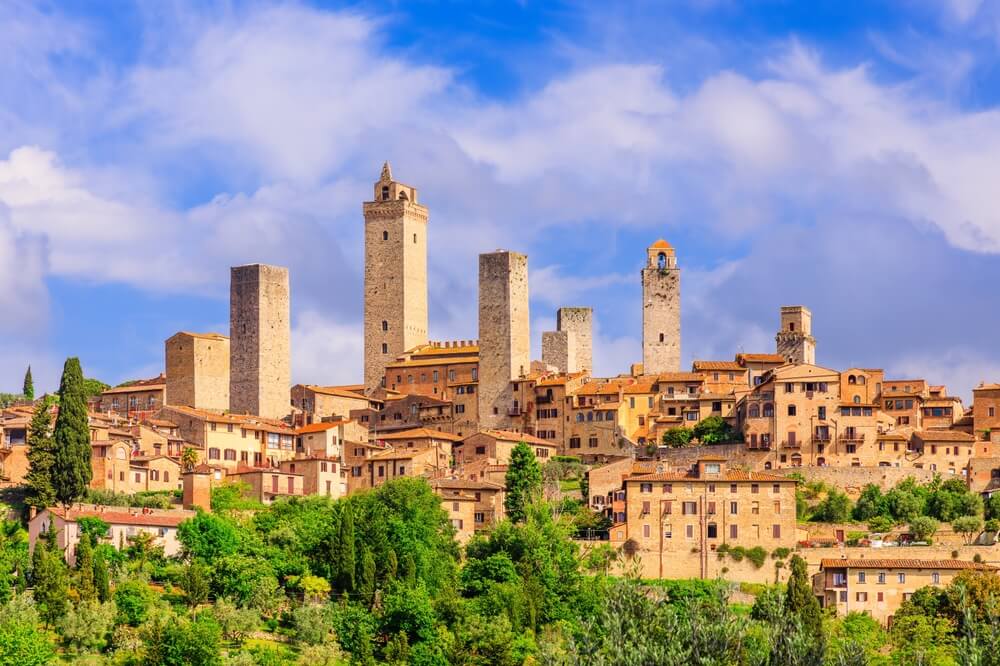
Introduction to San Gimignano
UNESCO World Heritage site, San Gimignano, is most famous for its collection of towers. So iconic are they that the town has even been affectionately nicknamed Medieval Manhattan. In reality, there are just 14 of the original 72 towers still standing today. And only one of these is open to the public to climb – the 54 metre high Torre Grossa which stands in the Piazza del Duomo. It’s definitely worth making the climb to the top of this tower to enjoy the stunning views from then top. These towers were originally built as a way for noble families to demonstrate their wealth and power.
To discover a bit more about the history and lifestyle of these noble families, you should head to Torre e Casa Campatelli. This is an 18th century palazzo in the heart of the town with a 28 metre tower that was built in the mid 12th century by the Campatelli family. The property is now open to the public who can visit to learn more about the Medieval history of San Gimignano and its upper class residents.
The other towers in San Gimignano can be admired from the outside. Although, for a unique experience, you may want to consider a very special dinner on the rooftop of the Torre Chigi or on its lower terrace with views of the towers. Or, for the ultimate romantic gesture, you can even spend a night in the Torre Chigi too.
The towers aren’t the only architectural gems to admire in San Gimignano though. The rest of the town is filled with several more superb examples of Romanesque and Gothic architecture.
Probably the next most important building after the towers would be its cathedral – the Church of Santa Maria Assunta. Step inside to discover the magnificent series of frescoes which line its walls. These depict stories from both the Old and New Testaments. The colours are incredibly bright and vivid and yet, these works have never been restored – these are the original colours as painted in the 1300s. This probably owes much to the fact that the side windows of the church were closed in order to allow the frescoes to be painted, thus there is much less light to cause any damage.
When visiting the cathedral, it’s also important not to miss the small Chapel of Santa Dina which houses the remains of the saint. This brought together three incredible artists – the architect Guilano da Maiano, sculptor Benedetto da Maiano as well as Domenico Ghirlandaio whose frescoes inside the chapel are simply exquisite.
Tips for navigating the city
San Gimignano is easy to explore on foot. From one side to another, it’s probably only a 15 minute walk. And if you want to enjoy a walk along its perimeter walls, they’re only just over 2 km in length.
For those coming by car, there are a number of car parks immediately outside the walls of the town. These largest (and busiest) of these is P1 Giubileo but there is also P2 Montemaggio, P3 Bagnaia Superiore and P4 Bagnaia Inferiore.
If coming to San Gimignano using public transport, then the nearest train station is in Poggibonsi. From here you will need to take either the number 130 or number 133 bus to san Gimignano. The journey by bus will take approximately 20 minutes.
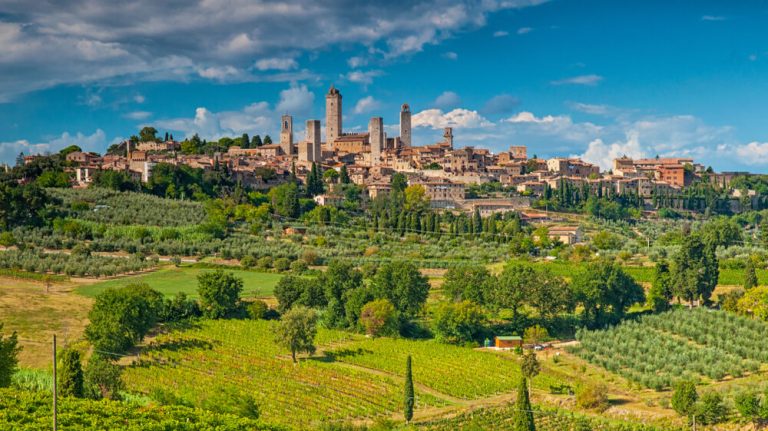
Accommodation and dining recommendations
San Gimignano has another famous claim to fame other than its towers and churches. Head to the Piazza della Cisterna and look out for the queues and you will have come across Gelataria Dondoli. The master gelato maker here has twice won the prestigious title of World Gelato Champion and the gelato here is certainly worth the wait!
Another famous export from San Gimignano is its wine. Vernaccia di San Gimignano is a white wine made using the grapes grown on the sandstone hillsides that surround the town. In fact, it’s the only really important white wine in Tuscany, since so much of the region is given over to the production of reds. Dante actually wrote about Vernaccia di San Gimignano wine in the Divine Comedy so you can be reassured that it comes highly recommended!
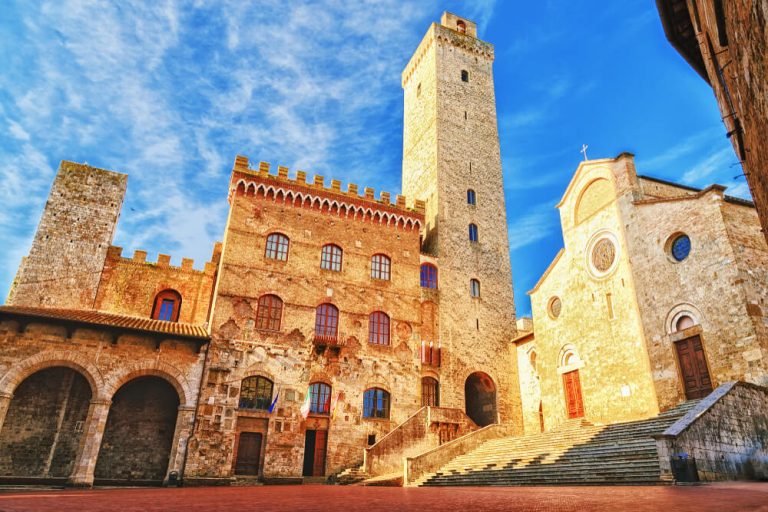
San Gimignano is also known for its saffron, pecorino cheese and its ham which has also been infused with saffron and dry aged. The production of saffron in this area has a long history. In fact, it was repeatedly used during the wars between Siena and Florence to pay off debts.
This San Gimignano apartment is well-placed to access the public transportation links to the town. Or, for larger groups, this San Gimignano villa will spoil you with views of the town’s towers from the idyllic setting of its private pool. Certainly, given how busy San Gimignano is, particularly in peak season, we recommend staying outside the town itself so that you can escape the crowds.
Montepulciano

Introduction to Montepulciano
Montepulciano’s historic centre is filled with beautiful churches, impressive palaces, picturesque alleyways as well as dreamy piazzas. Don’t be surprised if you think you recognise it as you explore its streets – the town was used for the filming of the popular Twilight vampire series.
Start your visit in the main Piazza Grande, home to the Palazzo Comunale, which bears a striking resemblance to the Palazzo Vecchio in Florence. Visitors can climb the bell tower to enjoy the 360 degree views from the top. These stretch across the Val d’Orcia towards Monte Amiata and Siena as well as across to Lake Trasimeno in neighbouring Umbria. Incidentally, there are plenty of other viewpoints if you don’t have a head for heights. Our favourite views over the surrounding countryside are found at the panoramic viewpoint at Vicolo della Mura at Viccolo dei Cacciatori 1. However, the views at Vicolo del Leone come a close second!
The Piazza Grande is also where you will find the Palazzo Nobili-Tarugi, the Cattedrale di Santa Maria Assunta and the Palazzo Contucci. The latter was once the home of Pope Julius III and then the Grand Duke Ferdinand, but is where you can now enjoy a wine tasting and cellar tour thanks to its ownership by a successful aristocratic wine-making family.
Find out more about Montepulciano in our Montepulciano travel guide.
Tips for navigating the city
To do justice to Montepulciano, you would need to spend 3 or 4 hours here, although you could pick off the main sites much more quickly. It’s an easily walkable town and the historic centre is pedestrianised. Cars are generally not permitted inside the city walls without a permit.
Driving to the town is relatively straightforward but visitors do need to be aware of the ZTL (Limited Traffic Zone). There is plenty of parking outside the town walls on the edge of the town. The parking areas next to the fortress and just outside the Porta al Prato tend to be the most convenient.
If you are dependent on public transport, just be aware that the train station is about 15 km outside the town at Chiusi-Chianciano Terme. As a result, you will need to catch a bus from here to the historic centre and these are few and far between. Alternatively, a taxi will cost between 30 and 40 euros.
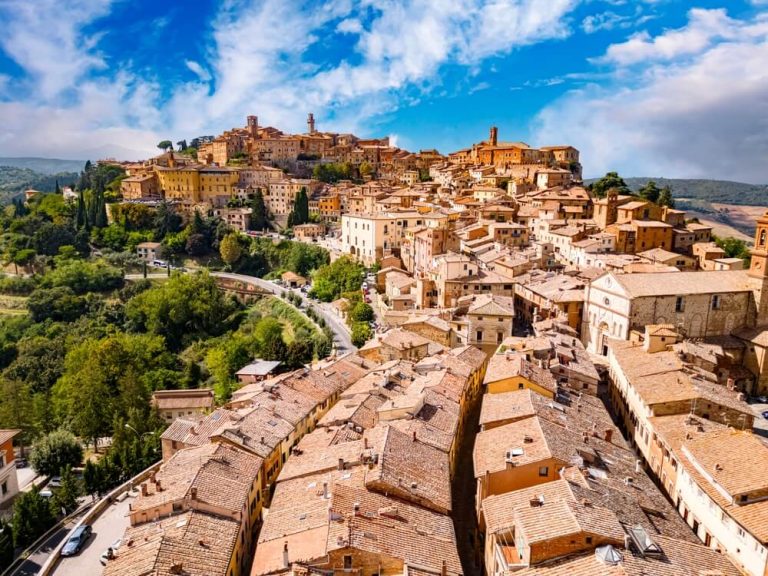
Accommodation and dining recommendations
Montepulciano is one of Tuscany’s most picturesque and charming towns. But arguably it is most well-known for it wine! The prized Vino di Montepulciano is a red wine awarded DOCG status that is made using Sangiovese grapes, whilst the Rosso di Montepulciano is a dry red wine also produced in this area. The town itself offers numerous opportunities to sample them all.
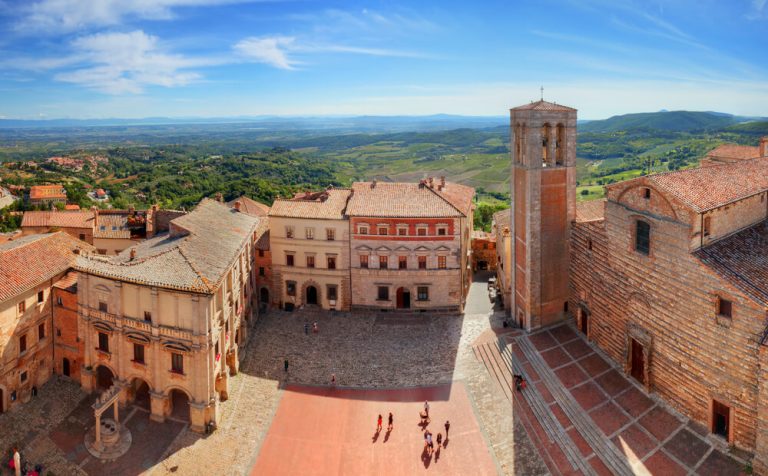
And, as you would expect, there are plenty of foods we recommend you sample in Montepulciano to accompany these wines. The hearty reds pair perfectly with the Chianina meat, the pici pasta and the Tuscan bread. Look out for products with the IGP and DOP certifications such as the Cinta Senese ham DOP or the Chianina beef IGP salami and bresaola. And end your meal with a sweet treat such as the almond cantucci dipped in a glass of Vin Santo, or some Tuscan ciambellini. Take a walk along the Via di Gracciano nel Corso if you’re looking to purchase artisanal food and wine to enjoy back in your villa in Tuscany.
Lucca
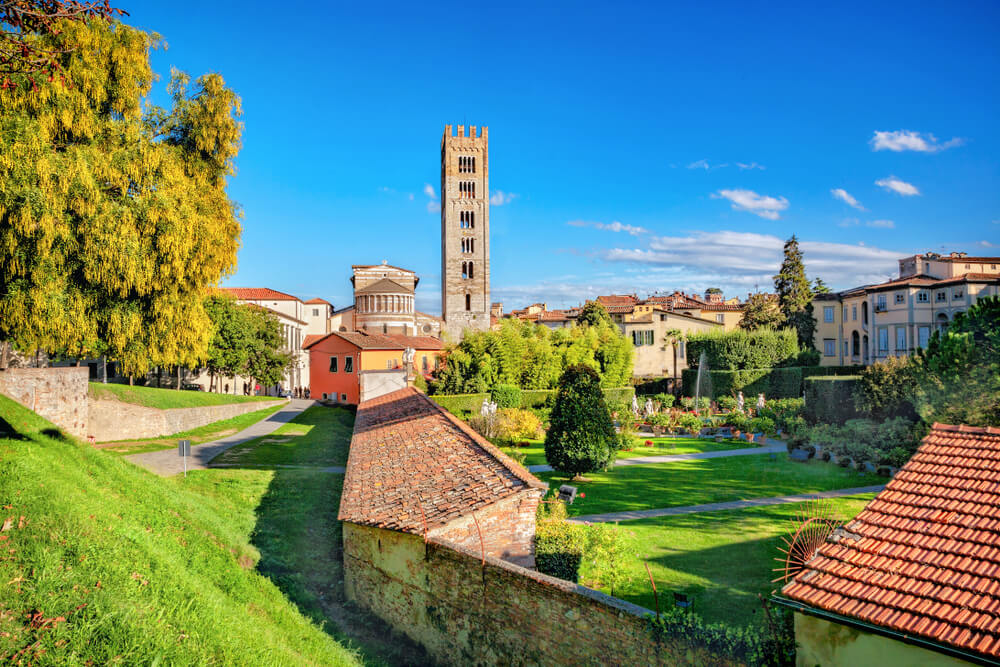
Introduction to Lucca
Lucca is one of our favourite cities in Tuscany. It’s small enough to be able to explore in a day but, if you’re lucky enough to be able to spend longer there, then it’s the perfect base for a Tuscany villa holiday.
The city is nestled in the heart of Tuscany, within perfectly preserved walls that have been converted into a scenic 4 kilometre long pedestrian promenade, complete with trees, grassy banks and family-friendly playgrounds. Whether you choose to enjoy the loop on foot or on two wheels by bike, it’s a great introduction to this elegant city.
Inside the walls, Lucca’s wealth of historic churches have earned it the affectionate nickname, ‘the city of a hundred churches.’ Those religious buildings most worth admiring include the Duomo di San Martino, the Romanesque San Michele al Foro and the Basilica of San Frediano.
For the perfect view of Lucca, climb the iconi Torre Guinigi, topped with mature oak trees. Another must-see is the unique Piazza dell’Anfiteatro. This oval-shaped square traces the outline of a former Roman amphitheatre, perfectly preserving Lucca’s ancient past.
Otherwise, just take time to wander through Lucca’s charming cobbled streets, admiring its elegant villas and towers that typically date between the twelfth and sixteenth centuries.
Discover more in our Lucca travel guide.
Tips for navigating the city
Lucca is easily accessible by train with regular connections from both Florence and Pisa. The train station is conveniently located just outside the city walls, within easy walking distance of the historic centre.
Of course, it is also possible to drive to Lucca. Just take note that the centro storico is a restricted traffic zone (ZTL). Parking outside the walls is recommended. However, once inside, the city is easily explored on foot or by bike. Residents certainly love to get about on two wheels and there are a number of bike rental businesses in Lucca where you can hire bikes if you wish.
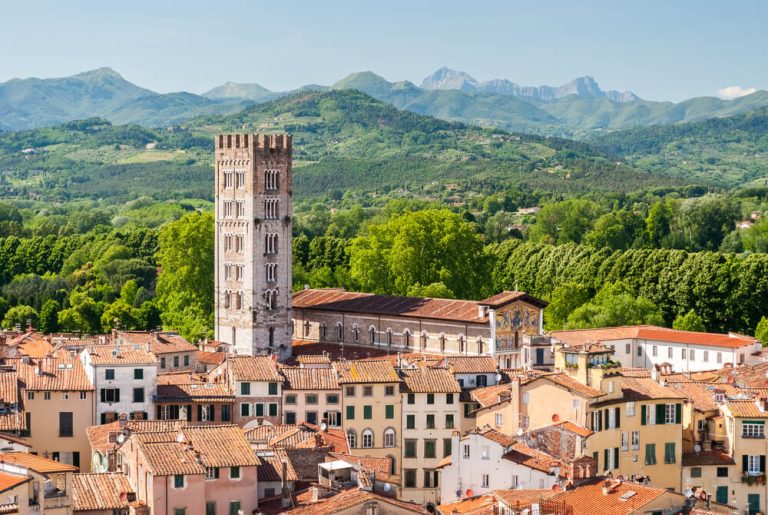
Accommodation and dining recommendations
Lucca is an absolute haven for foodies. We are pretty confident in saying that there isn’t another Italian city equivalent in size that can boast as many good quality restaurants as Lucca has.
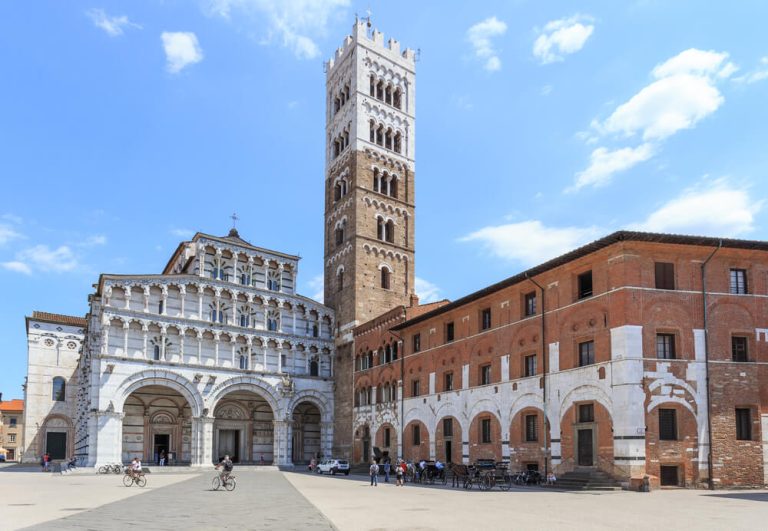
L’Angolo Tondo is our firm favourite. The quality of food here along with the service and the setting in the Piazza dell’Anfiteatro are all faultless. The adjacent Sotto Sotto comes a close second.
Alternatively, for traditional Tuscan fare in a warm, family-friendly setting, Buca di Sant’ Antonio is a top choice, especially in the Summer when outdoor dining is available.
Or for something incredibly innovative, head outside the city walls to Collegio Culinario. The setting of this restaurant may not look much but the food is imaginative and delicious.
Last (but certainly not least) we recommend Osteria da Pasquale. Many would argue that this steals the show with its exceptional food and warm, personal touch from the owner himself.
Arezzo
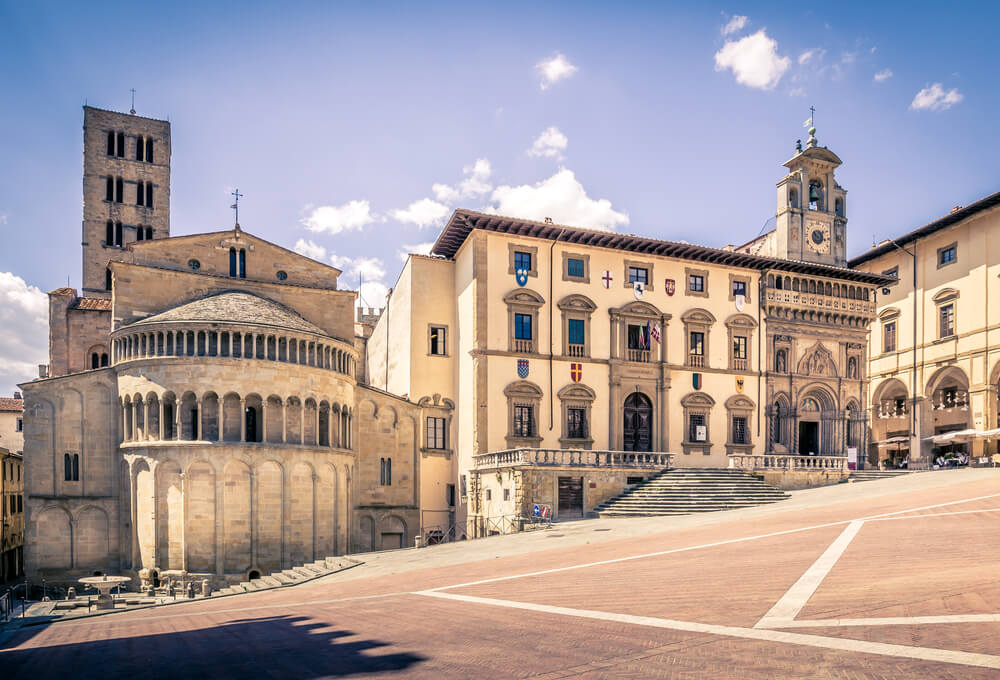
Introduction to Arezzo
Arezzo sits nestled in a southeastern corner of Tuscany. Dating back to the Etruscan era and later serving as a key Roman military outpost, it is steeped in history. Often overlooked by tourists, it is perfect if you prefer to discover a quieter, less visited city in Tuscany, awy from the crowds.
These days, the city is divided into two very distinct parts – it is the beautifully preserved historic centre perched on a hill that you want to explore, rather than the modern lower part.
The star attraction in Arezzo is the Church of San Francesco, home to Piera della Francesca’s early Renaissance fresco cycle The Legend of the True Cross. However, there are a number of other churches in Arezzo also worth admiring. These include the Romanesque Santa Maria della Pieve, the 13th century Church of San Domenico and the small but exquisite Church of Santa Maria della Grazie in the lower town.
Arezzo’s most famous resident was the famed artist, architect and biographer, Giorgio Vasari. His former home – Casa Vasari – is now a museum offering an insight into his artistic legacy through beautifully frescoed rooms. More of his work can also be found in the nearby Badia delle SS Flora e Lucilla as well as the elegant loggia he designed that overlooks Arezzo’s main square – Piazza Grande.
With its sloped red-brick floor and lined with historical buildings and charming cafes, we think this square is one of the most attractive piazzas in Tuscany.
Tips for navigating the city
Much of the historic centre of Arezzo is pedestrianised. However, if coming by car, visitors will find a number of car parks. We think one of the most convenient is that on Via Pietri. A series of escalators link this car park to the historic centre. However, there are plenty of others to choose from.
If coming by train to Arezzo, it’s important to note that it has 3 train stations – Arezzo, Arezzo Casello 1 and Arezzo Pescaiola. Choose the one simply called Arezzo as this is the closest to the historic centre. It is about a kilometre from here along the Via Guido Monaco to Arezzo’s main piazza. However, there is a bus service if you prefer.
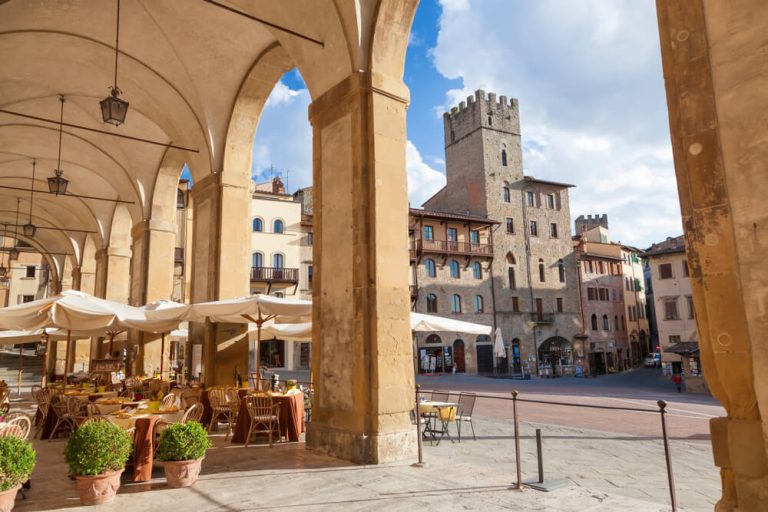
Accommodation and dining recommendations
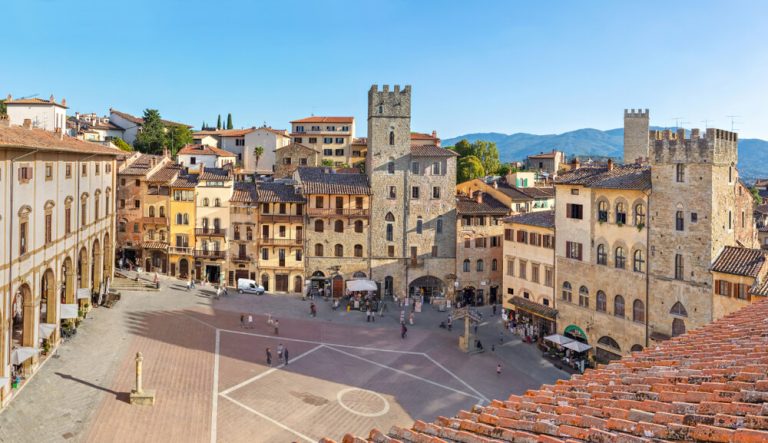
If staying overnight in Arezzo, there are plenty of accommodation options on offer, suitable for all budgets. These include hotels in Arezzo, B&Bs as well as villa rentals in Arezzo too. Whichever option you choose, you will need to pay a tourist tax. In Arezzo, the tourist tax applies to all accommodation but the amount depends on the type and rating of your hotel or holiday rental. Typically costs are between €1.50 and €3 per person per night, with those under 12 years old exempt from payment.
Things to do in Tuscany
Art and Architecture
Tuscany is synonymous with art and architecture. The Duomo of Florence, the leaning tower of Pisa, the walled hilltop town of Volterra, the Medieval towers of San Gimignano, the palazzi of Certaldo, the fortress of Montalcino…. The list is endless. There is breath-taking architecture, frescoed ceilings, quaint courtyards, dramatic palaces and historic castles almost around every corner.
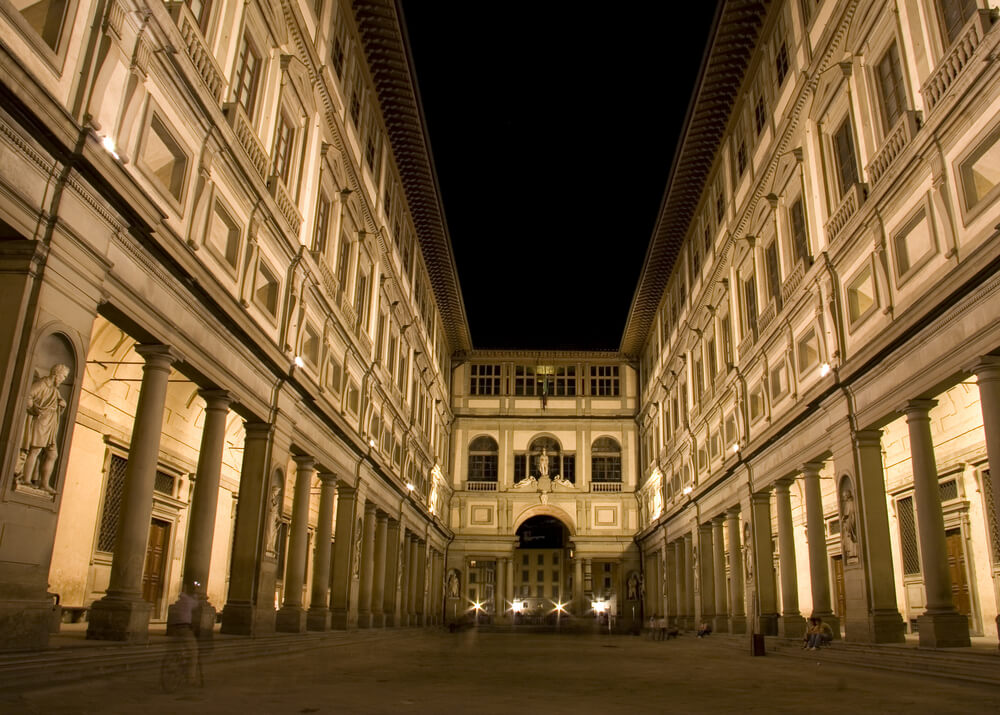
Tuscany offers holidaymakers a journey through the birthplace of the Renaissance. Tuscany’s capital city, Florence, is home to some of the most iconic masterpieces in the world. These include Michelangelo’s David housed in the Galleria dell’Accademia as well as Botticelli’s Birth of Venus in the Uffizi Gallery.
But the art and architecture continues to impress far outside Florence. In Siena, the fan-shaped Piazza del Campo and striped Gothic Cathedral are breathtaking whilst in Pisa, the famous Leaning Tower is part of a much larger complex of Romanesque buildings that are just as awe-inspiring. In Lucca and San Gimignano, the Medieval towers and churches give visitors a glimpse into Tuscany’s rich past. And in Arezzo, you can admire Piero della Francesca’s frescoes in the Church of San Francesco.
What never fails to amaze us each time we visit Tuscany though is that this artistic and architectural heritage is not confined to the grand cities. Far from it. We have lost count of the number of times we have entered a tiny church in one of Tuscany’s hilltop villages to discover an artistic masterpiece.
Vineyards and wineries
Tuscany is synonymous with wine and no visit to Tuscany would be complete without enjoying a wine tasting or winery tour. If you’re in search of the very best Tuscan wines, then we recommend you start with Chianti Classico. This region is widely renowned to serve up some of the best wines anywhere in Italy, not just in Tuscany. Chianti Classico sits in the very heart of Tuscany, in an area that stretches between Florence and Siena. Within this area, there are five ‘in Chianti’ villages – Radda in Chianti, Greve in Chianti, Panzano in Chianti, Gaiole in Chianti and Castellina in Chianti. However, it also incorporates other villages such as Poggibonsi and San Casciano in Val di Pesa. The wines are predominantly made using the Sangiovese grape and are red wines, famous for their robust character.
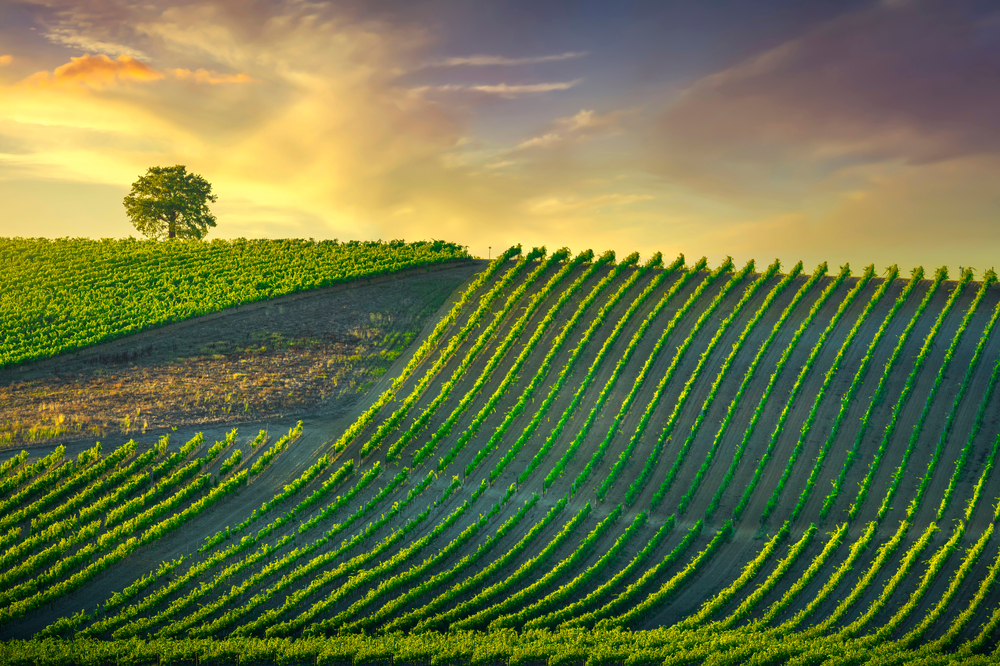
You then also have the Chianti region of Tuscany. This is completely independent and separate from the Chianti Classico region and its borders extend beyond those of Chianti Classico.
And then there are the Super Tuscans. These often include international grape varieties such as Cabernet Sauvignon and Merlot. As a result, they don’t tend to adhere to the strict DOC rules. Some regions of note in Tuscany producing Super Tuscan wines include Bolgheri (which is famous for Sassicaia and Ornellaia wines), Carmignano and Morellino di Scanscano. A couple of our favourite wineries producing these incredible Super Tuscan reds are Antinori Tenuta Guado al Tasso and Castello Banfi.
Also of note in Tuscany are the Rosso di Montalcino wines. These are younger and lighter red wines than the Brunello di Montalcino. This is a wine made exclusively from Sangiovese grapes and known for its intense flavours. The Vino Nobile di Montepulciano is another Sangiovese wine also known for its full body.
And last but not least, there is the crisp and refreshing white wine – Vernaccia di San Gimignano.
Exploring the Tuscan countryside
No visit to Tuscany would be complete without exploring the beautiful Tuscan countryside. The cities in Tuscany – Florence, Pisa and Siena – are famous the world over and provide a great introduction to this iconic region. But you can’t fully appreciate Tuscany’s beauty until you have driven along its rural roads and visited some of its smaller towns and villages. To fully explore the Tuscan countryside, you need to visit some of its smaller (but nevertheless iconic) towns – Volterra, San Gimignano, Cortona, Certaldo and Lucca for example.
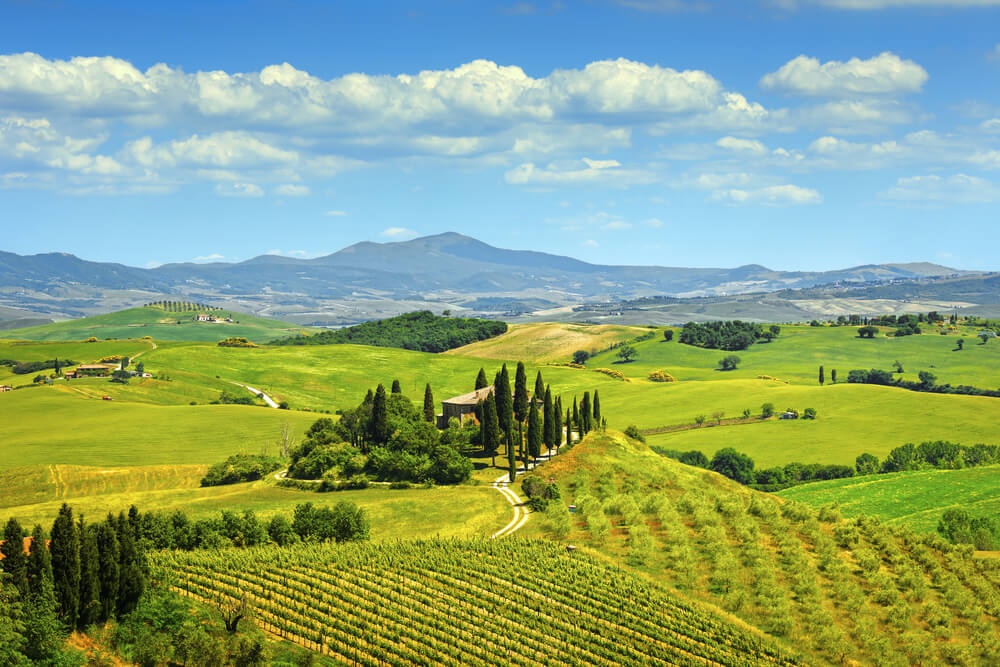
Many of these towns and villages have ancient origins. Volterra is famous for its Etruscan heritage for example, as is Cortona with its ancient Etruscan walls which were subsequently reinforced by the Romans and then again during the Middle Ages. All have a fascinating history and all are surrounded by the most incredible countryside.
Tuscany’s countryside is also blessed with many borghi piu belli. Tuscany can proudly boast to have 29 small and picturesque villages recognised as ‘Borghi piu belli d’Italia’ or ‘Most beautiful Villages in Italy’. Some of our favourites include Cetona, Barga, Lucignano and Anghiari.
Much of this countryside is prime wine country too. The area between Florence and Siena is affectionately nicknamed Chianti-shire. Here, you will find numerous small villages dotted among the rolling hills, vineyards and olive groves of the Chianti wine district. These include Castellina in Chianti, Montefioralle, Monteriggioni, Radda in Chianti and San Casciano in Val di Pesa amongst others.
South of Siena, you then have the Val d’Orcia. This rural idyll is famous for its cypress-lined roads and expanse of green fields, vineyards and olive groves. Like the Chianti area, it is dotted with Medieval villages. These include Pienza, San Quirico d’Orcia and Castiglione d’Orcia. All are picturesque, romantic hilltop towns boasting a rich cultural heritage.
The southernmost rural area of Tuscany is the Maremma region. It stretches along the Tyrrhenian coastline from Livorno to Grosseto. Unlike Chianti further north, it’s not known for its wine production. But actually ,715 hectares of this 9000 hectare area are under vine. However, this is a very young wine region. The DOC Maremma Toscana is the third largest vineyard area of the Tuscan DOCs (behind Chianti and Chianti Classico) but it was only created in 2011. Expect to find a much larger variety of grape varieties here from Cabernet Sauvignon to Petit Verdot, Merlot and Cabernet Franc. These varieties thrive in the sandstone terrior here whilst the proximity to the sea enables the late-ripening varieties to mature slowly and evenly.
Maremma really is unique because of sheer variety of territory that the area encompasses. As well as vineyards, it includes long stretches of beaches, marshes, flatlands, green hills, woodland and natural thermal baths. Its roots lie with the Etruscans and then the Romans, and many important archaeological finds have been discovered in this area.
Beaches
When one thinks of Tuscany, one usually either conjures up images of rolling hills, vineyards and olive groves or instead it brings to mind pictures of its most famous cities – Florence, Pisa and Siena. However, Tuscany also has an impressive coastline that stretches km from Forte dei Marmi in the north to in the the Orbetello lagoon in the south. Many of these beaches have been awarded the prestigious blue flag award for cleanliness. And many offer great opportunities for water sports such as windsurfing and water skiing. A Tuscany villa on this coastline can be a great base for a holiday in Tuscany.
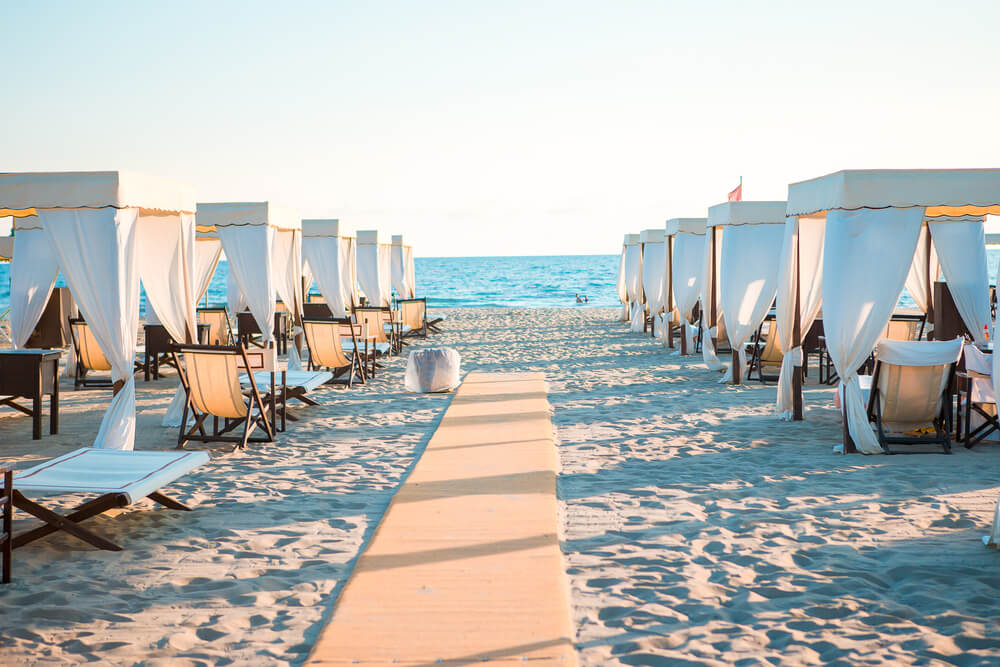
The beaches in Tuscany are extremely diverse. In the far north of Tuscany bordering Liguria, you have the Apuan Riviera. This is a 20 km stretch of coastline that incorporates resorts such as the Marina di Carrara, Marina di Massa and Ronchi. Numerous beach clubs and water sports centres are perfect for those that enjoy windsurfing and sailing.
Moving south, you come to the beach resorts of Forte dei Marmi, Viareggio, Lido di Camaiore and Marina di Pietrasanta which sit on the Versilia coast. These are the beaches where you can expect to see wealthy Florentines escaping from the heat of Summer in the city. It’s also where you will find plenty of private beach clubs. This is a great area for younger people, who will enjoy the vibrant night life. And these are also the best beaches in Tuscany for surfing. However, with few free public beaches, it’s arguably not the best option for families with young children or those on a budget.
Keep heading south and you will reach the Pisan coast and the Etruscan coast. Here, the Migliarino San Rossore and Massaciuccoli Park has some stunning beaches, bordered by sand dunes. Many of these are free. And at Marina di Pisa, Calambrone and Tirrenia, there are long stretches of sandy beaches, perfect for families. Incidentally, many of these beaches were created by Benito Mussolini who transformed former marshland into popular seaside resorts.
As you reach Piombino on the southern Etruscan coast, the coastline becomes more varied. Yes, there are still plenty of sandy beaches but you will also start to discover charming rocky coves. From Piombino, you can also catch a boat to Tuscany’s islands – Elba and Pianosa.
Certainly, a villa on Elba island is an idyllic option for your Tuscany villa holiday. There are long stretches of sandy beach such as at Cavoli, Procchio, Lido di Capoliveri and Biodola as well as smaller, more secluded pebble beaches such as at Padulella, Le Ghiaie, Acquaviva and Sansone. The waters around Elba island are also great for snorkelling.
Another of the islands in the Tuscan archipelago is Capraia. This boasts some of the most beautiful beaches in Tuscany.
You’re then at the simply stunning Maremma beaches. Crystal clear waters and pale sandy beaches on one side and the wooded WWF Oasis of San Felice and Maremma Regional Park on the other provides the most idyllic spot for holidaymakers to enjoy. Resorts here include Cala Violina and Fiumara beach at Marina di Grosseto.
And, last but not least, just before you cross into neighbouring Lazio, you reach the Costa d’Argento. 16 km of almost uninterrupted beach runs all the way from Marina di Talamone to Monte Argentario. This is a promontory that is connected to the Italian mainland by two narrow strips of land, flanked by beaches on each side and with a saltwater lagoon in its centre. A bridge leads from here to Monte Argentario (home to Cala del Gesso), Porto Ercole and Porto Santo Stefano.
You certainly won’t be disappointed if you choose a villa on the Tuscan coast for your next Tuscany villa stay.
Best Places to Visit in Tuscany
We would argue that some of the best places to visit in Tuscany are its hidden gems. However, we appreciate that there are also a number of bucket list sights that simply have to be ticked off for you to have fully discovered the region. For us, these attractions are those bucket list places to see in Tuscany.
The Leaning Tower of Pisa
Whilst there is much more to Pisa than just its leaning tower, there is no disputing that it’s this that draws the crowds year after year. Standing in the Piazza dei Miracoli, it is actually the bell tower of the adjacent cathedral. Just under 300 steps take you to the top where you can enjoy the wonderful views over the nearby cathedral and baptistery.
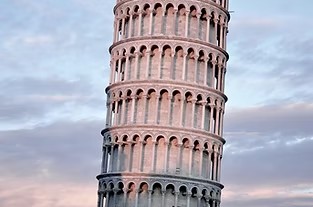
The Uffizi Gallery in Florence
Whilst Florence is home to 72 museums, undoubtedly, its most famous museum is the Uffizi Gallery. Opened in 1769, the building was designed by Giorgio Vasari and commissioned by Cosimo I de Medici. It is home to hundreds of breath-taking works of art from the 12th to the 17th centuries. These include works by Titian, Leonardo da Vinci, Rubens, Michelangelo and Boticelli.
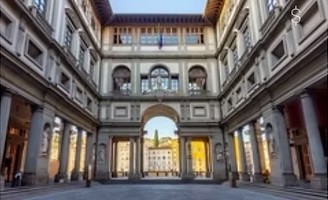
The Duomo in Florence
The Cathedral of Santa Maria del Fiore, and specifically Brunelleschi’s dome, dominates Florence’s skyline. When it was built in the 15th century, it was the biggest cathedral in Europe. Measuring 153 metres long, 90 metres wide and 90 metres high, these days it is the third biggest as St Peter’s in Rome and St Paul’s in London are both bigger. It is possible to climb the 463 steps to the top of the dome to enjoy the views over the city. Alternatively, opt to enjoy a better view of the dome itself by climbing the 414 steps of the neighbouring Campanile.
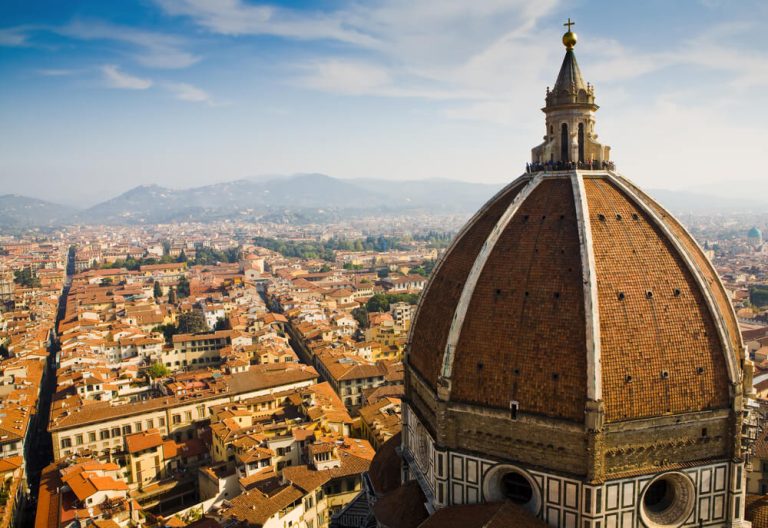
The Accademia in Florence
Florence is packed full of museums and it is hard to choose between them. However, the Accademia certainly deserves to make it onto our Tuscany bucket list. The fourth most visited gallery in Italy, it is home to the largest collection of Michelangelo’s works in the world. And the most famous of these is definitely the statue of David. A replica of this statue stands outside in the Piazza della Signoria but if you want to see the original, you need to head inside. Incidentally, there is another original in the gallery which has a replica in the same square – Giambologna’s Rape of the Sabine Women. Other works by Michelangelo in the Accademia include the four works of the Slaves or The Prisoners, St Matthew and the Palestrina Pieta. There are also works by Fra Bartolomeo, Botticelli and Ghirlandaio.
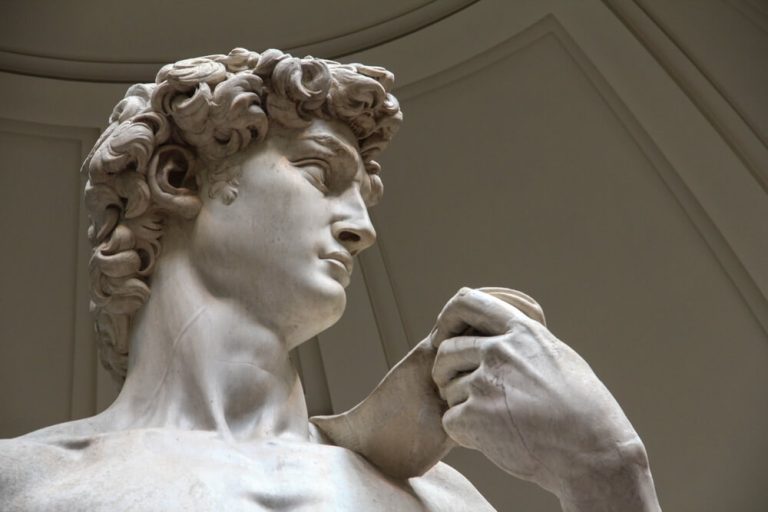
The Ponte Vecchio in Florence
There are 12 bridges in Florence, each spanning the River Arno. But by far the most famous is the Ponte Vecchio. The bridge dates back to 1345. Once upon a time, it would have been lined with butchers, fishmongers and leather artisans selling their wares. These days it is lined with jewellery and goldsmith shops and links the historic centre of Florence with the Oltrarno district on the other side.
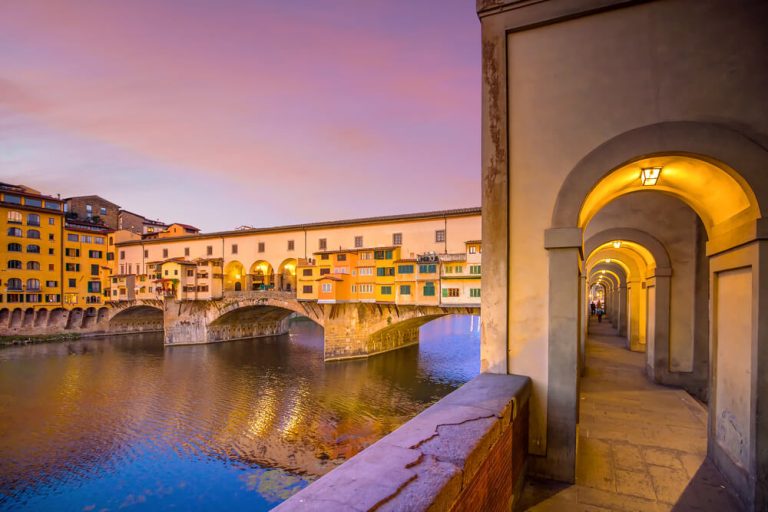
The Marble Quarries of Carrara
Carrara is known globally for being the city of marble. In fact, there have been active quarries in this area since Roman times and the quarries here have produced more marble than anywhere else in the world. It has inspired countless artists over the years, not least Michelangelo. He carved the Pieta in St Peter’s Basilica in Rome from a single block of Carrara marble. And today carrara marble is still used to adorn luxury villas and buildings all over the world. Visitors can learn more about the history in 3 museums within the town as well as visiting the quarries themselves.
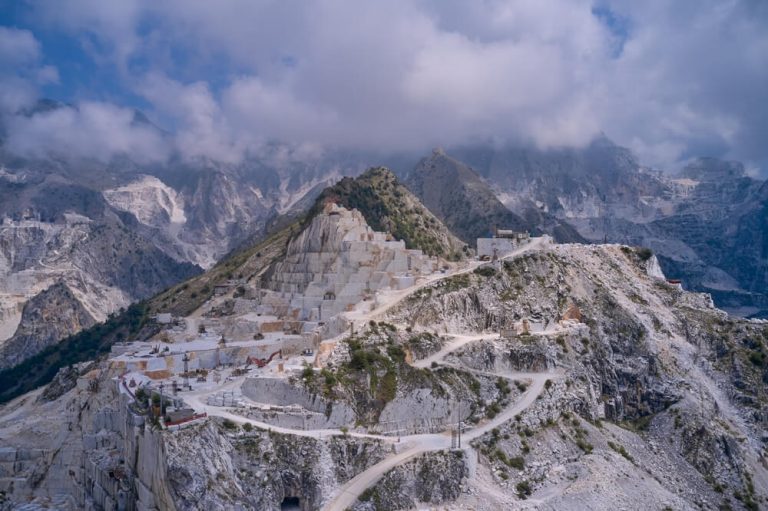
Lucca's city walls
The 4 km long city walls around Lucca have been transformed into a wide pathway lined with nature trees and grassy banks. It’s the perfect setting to join the local Italians for an evening or morning passeggiata. When in Lucca, the Piazza dell’ Anfiteatro and Torre Giunigi must also be seen. Climb the 223 steps to the top where you can get a close up view of the tree that grows from its summit. It’s this tree which makes the tower easy to distinguish from the others in the city.
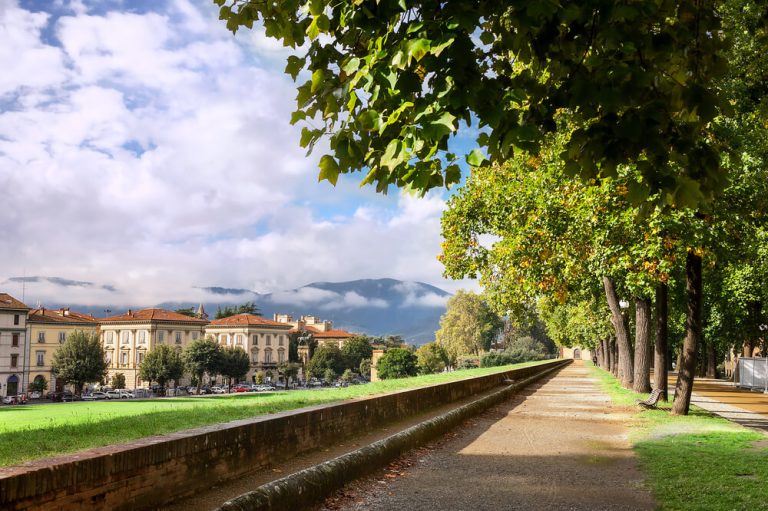
The Torre Grossa in San Gimignano
San Gimignano has been a UNESCO World Heritage site since 1990. It has a skyline that is instantly recognisable thanks to its dramatic towers. No Tuscany villa holiday would be complete without discovering the 14 towers that still stand today. The Torre Grossa is the only one open to the public to climb.as and gardens include Villa Petraia (home to the most incredible ballroom), Villa di Castello, Villa Medicea di Artimino-La Ferdinanda, Villa Ambra in Poggio a Caiano, the Boboli gardens and Villa di Pratolino.p from the ground at a temperature of 37.5°C and which can claim therapeutic and relaxing properties.
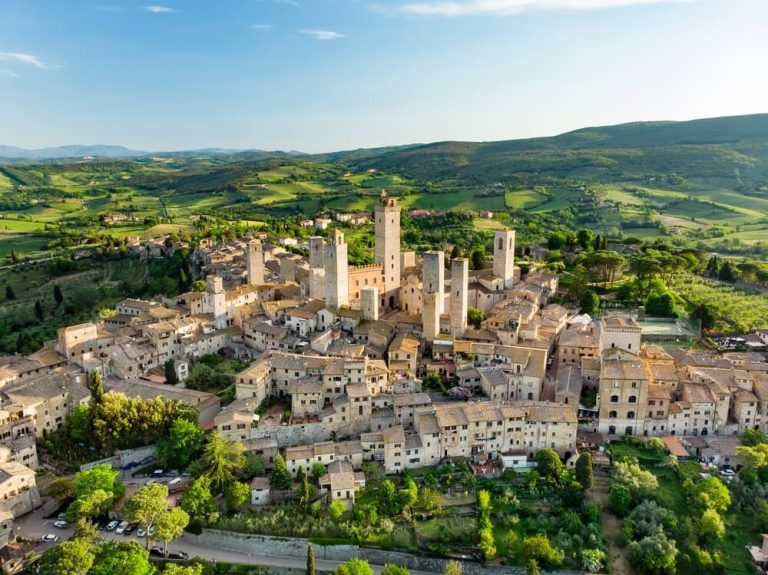
Pienza
Another of Tuscany’s many UNESCO World Heritage sites, Pienza will only take a couple of hours to explore but it is well worth doing. We think it is the best example there is of a Renaissance ideal city. The work of architect Benaro Rossellino and humanist Leon Battista Alberti, both men successfully brought the vision of Pope Pius II to life.
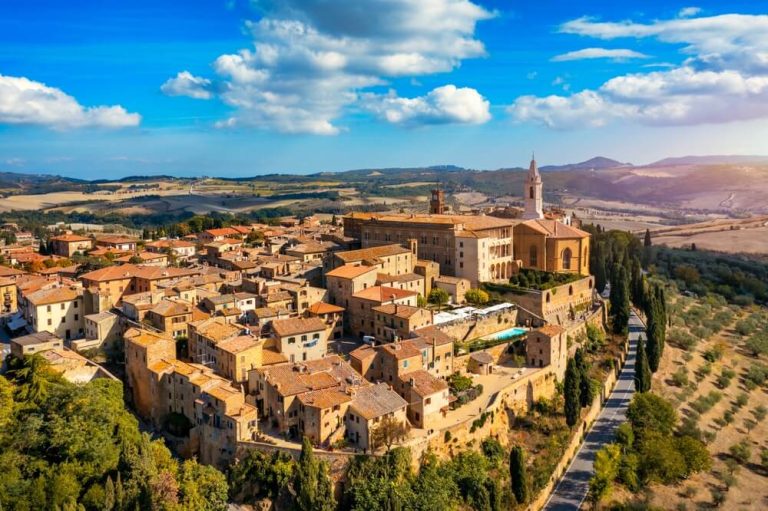
The Val d'Orcia
Pienza is in the heart of the Val d’Orcia and this area of Tuscan countryside needs to be explored more fully to truly discover Tuscany. Crossed by the Via Francigena, an ancient pilgrim route, this area epitomises the delights of slow travel. Expect a sea of hills dotted with stunning villages and roads lined with cypress trees.
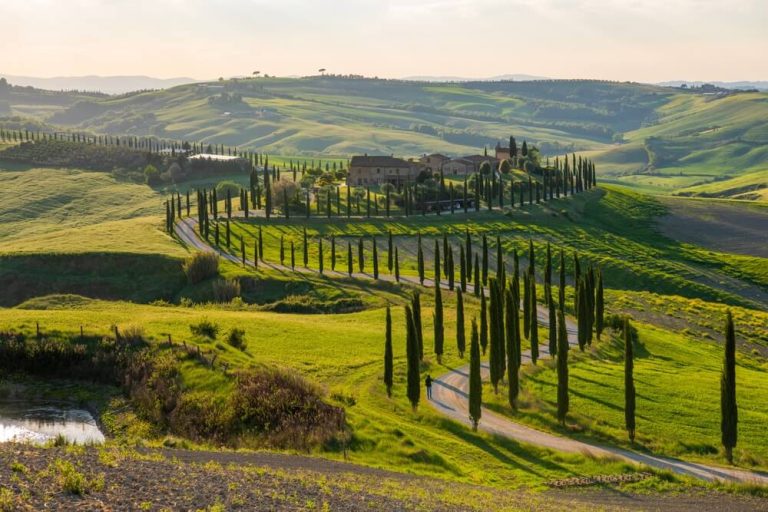
Medici Villas and Gardens
The 12 Medici villas and gardens in Tuscany are yet another of Italy’s UNESCO World Heritage sites. They are spread throughout the Tuscan countryside, however many tend to be in the area around Florence since the family held power in this city for 300 years from 1434 onwards. Some of the most notable Medici villas and gardens include Villa Petraia (home to the most incredible ballroom), Villa di Castello, Villa Medicea di Artimino-La Ferdinanda, Villa Ambra in Poggio a Caiano, the Boboli gardens and Villa di Pratolino.
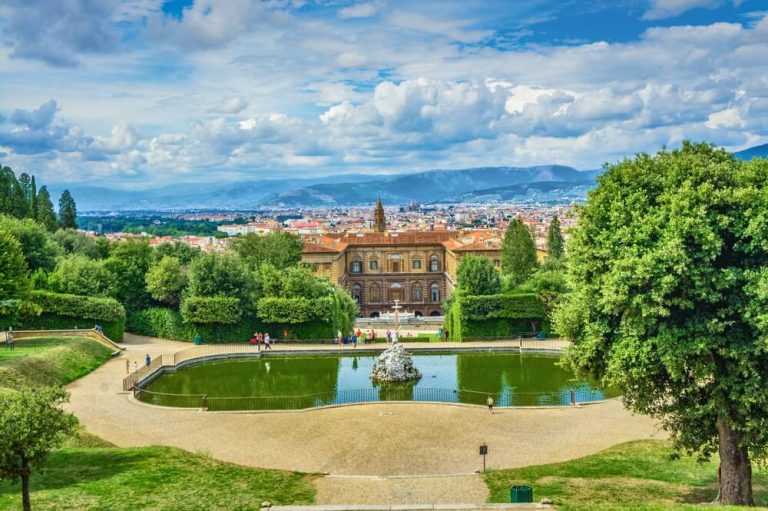
Beaches of Forte dei Marmi
Whilst Tuscany is best known for its rural landscape than its coastline, no Tuscany bucket list would be complete without exploring Tuscany’s beaches. Those at Forte dei Marmi epitomise Italian glamour. Whilst it may not be quite what it was in its heyday, it still attracts a wealthy set who spend the days in the beach club and party in the bars and restaurants by night.
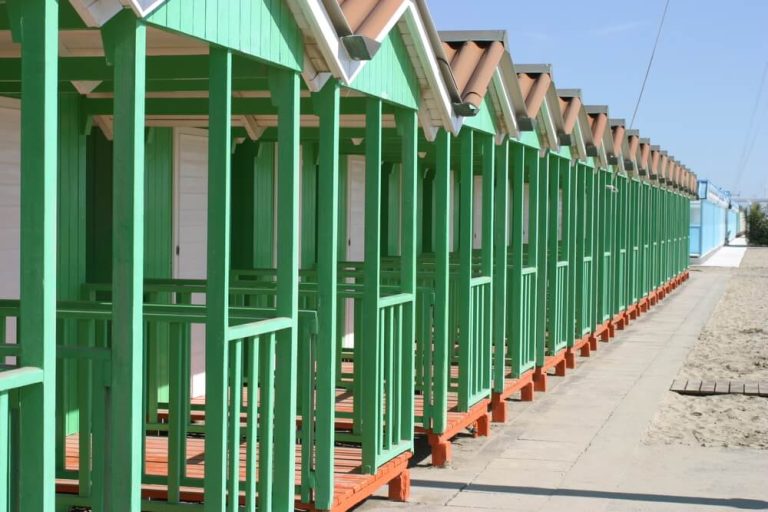
Thermal Baths of Saturnia
The Terme di Saturnia are just one of several natural thermal baths in Tuscany. Others include those at Gambassi Terme, the Terme di Petriolo, the Bagna di Lucca and the Bagni San Filippo. The baths at Saturnia are probably the most famous and certainly the most photographed. Relax in the sulphurous waters which bubble up from the ground at a temperature of 37.5°C and which can claim therapeutic and relaxing properties.
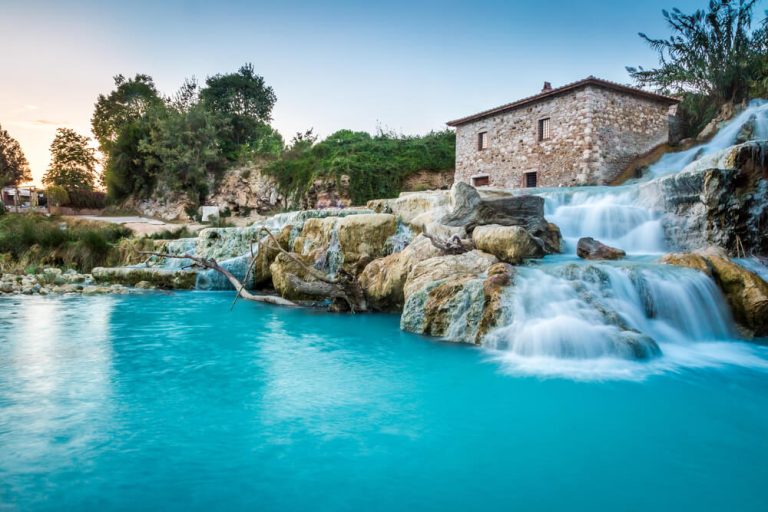
Piazza del Campo in Siena
Arguably the most beautiful piazza in Tuscany, this is the venue for the palio twice a year. A UNESCO World Heritage site since 1995, the square is flanked on one side by the Torre del Mangia and Palazzo Pubblico, whilst a short stroll away is the beautiful black and white striped marble Duomo. Arrive early to climb the 400 stairs of the tower to admire the breath-taking views of the city from the top.
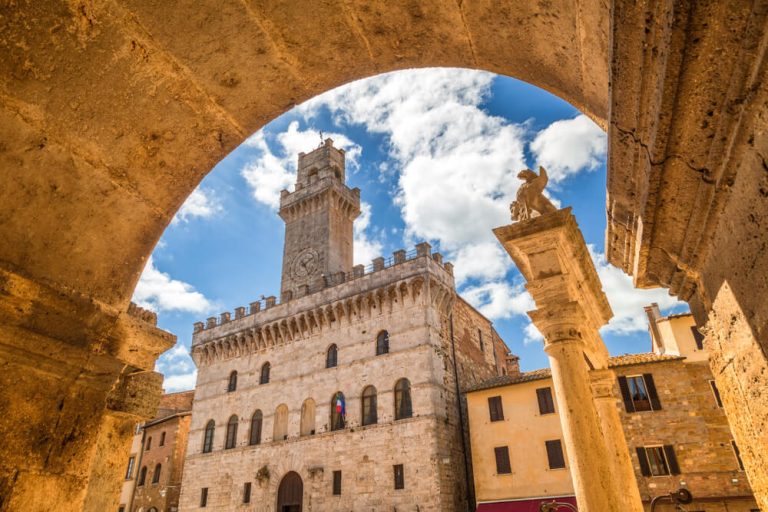
The Baths of Montecatini Terme
One of the Great Spa Towns of Europe, Montecatini Terme is home to the Parco delle Terme. Here, each of the nine natural sulphate springs are enclosed in their own stunning Art Nouveau building. Relax and indulge in a natural spa treatment. Or join the locals and head to the Terme Tettuccio to drink the water from one of the 4 taps here. It is claimed that the water can be good for a huge range of different ailments from diabetes to stomach upsets.
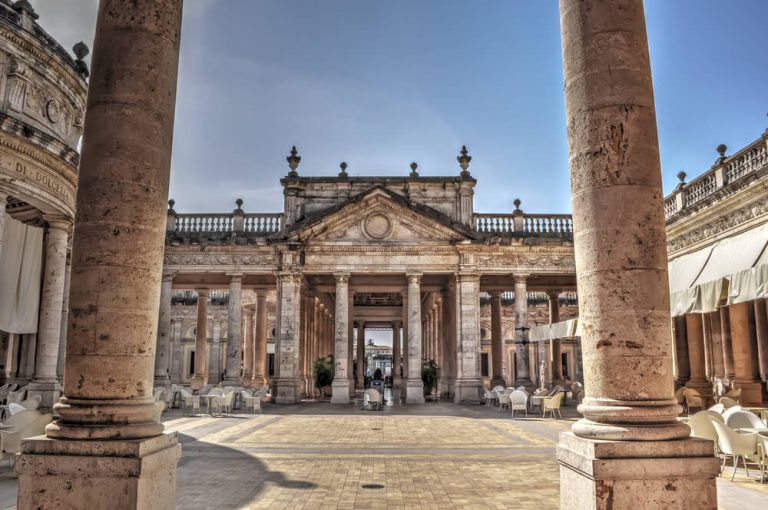
What to Eat and Drink in Tuscany
As you can would expect from any Italian region, Tuscany serves up the most delicious food. There are plenty of regional specialities we recommend you trying during your Tuscany villa holiday.
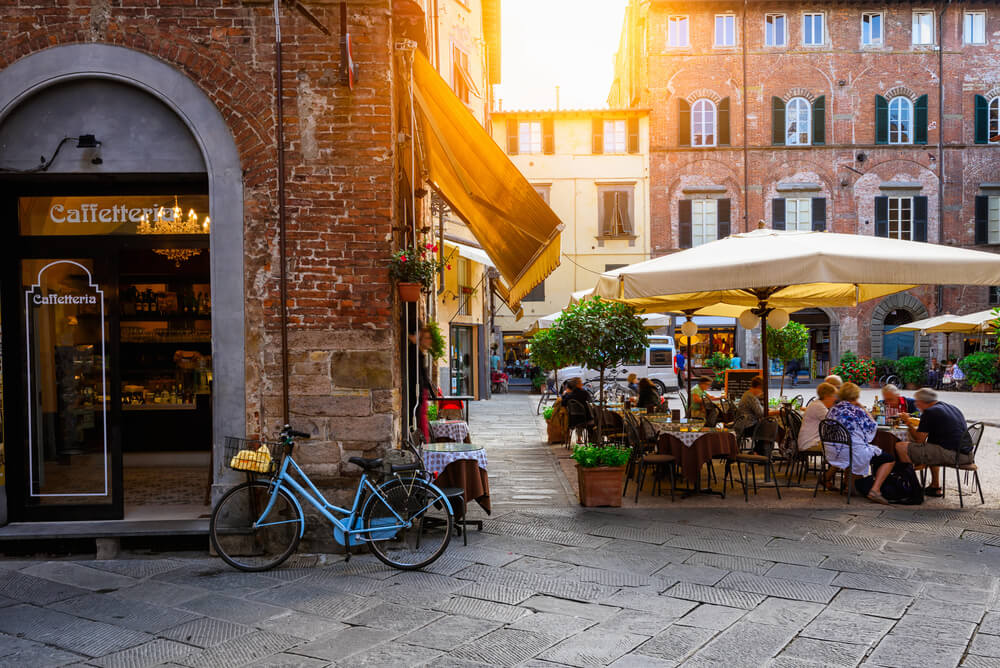
Bistecca alla Fiorentina
Probably the most famous Tuscan dish since, this is a T-bone steak, grilled and served rare. The best steaks will be from Chianina cows, an ancient Tuscan breed of cattle. This epitomises the simplicity of Tuscan cooking. It uses just 5 ingredients – the steak, rosemary, sage, oil and seasoning.
Lampredotto
Another dish not for vegetarians, lampredotto is made from the fourth stomach of a cow which has been boiled with a mixture of herbs. It’s then served up in a sandwich. This is a traditional street food to be found in Florence. It was a typical dish that was cheap to make – a perfect example of cucina povera.
Soups
Tuscany is known for its hearty, warming soups and you will find plenty of different local specialities wherever you go in Tuscany. One of the most common is Pappa al Pomodoro. This is absolutely delicious and combines fresh tomatoes with bread, oil, garlic, herbs and other vegetables. A great example of ‘peasant’ food, it’s a common way that Tuscans use up stale or leftover bread so that none is wasted. And since this can be served hot, at room temperature or chilled, it’s a great option to enjoy all year round. If in Maremma, the close equivalent of this soup is Acquacotta. Again, this is a bread-based soup that also uses onions, tomatoes, oil and water. It also sometimes has the addition of a poached egg on top. Similar again in style is the Ribollita, another Tuscan bread soup which also uses up kitchen leftovers. There are plenty of variations but the most common includes bread, cannellini beans, kale, cabbage and other root vegetables. Alternatively, if in Mugello, look out for the Farinata di Cavolo Nero, which is a delicious soup that combines cavolo nero with cannoli beans and herbs. Or in Maremma, order the Acquacotta soup.
Head to the coast and you will find delicious seafood soups. Cacciucco originated in the coastal town of Livorno. It is a delicious seafood chowder to which toasted bread rubbed with garlic is added in the final stages.
Panzanella Salad
Another dish whose main ingredients are tomatoes and bread is the panzanella salad. Again, it’s a way Tuscans would traditionally have used up stale and dry bread but these days you may find it made using bread cut into cubes and toasted in the oven instead. This is the perfect dish to enjoy on a hot Summer day.
Desserts and sweet treats
There are plenty of Tuscan specialities to satisfy even the sweetest tooth too. Chestnuts are a popular ingredient in Tuscan cuisine and chestnut flour finds its way into many desserts. These include castagnaccio, a traditional dessert that also includes raisins and pine nuts. Also worth trying is a sweet treat that looks similar to a pancake. Cian are made in a similar way to a crepe would be in France but use chestnut flour. Try piping hot topped with honey and ricotta cheese.
Many local towns and areas will have their unique sweet treats too. For example, Lucca has Buccellato, a delicious pastry flavoured with raisins and aniseed. Or Pontasserchio near Pisa is where you will find a Torta co’ Bischeri. The base of this cake is similar to a pastry and it is then filled with rice, cocoa, chocolate, eggs, sugar, pine nuts, raisings and spices. Or Elba Island has Schiaccia Briaca, a sweet flat bread topped with pine nuts and dried fruits. There are plenty of other sweet treats just waiting to be discovered on your Tuscany villa holiday.
And, last but not least, Tuscany is famous for Cantuccini. These are best described as crunchy biscuits. Their core ingredients are flour, sugar, butter, almonds and eggs. However, you will often find variations in stores and on market stalls today. They are made as a whole loaf, cooked, then cut into pieces before being popped back into the oven to crisp up. To enjoy them at their best, dip them into a glass of Vinsanto before enjoying their delicious crunchiness!
Of course, there are some great restaurants where you can sample some of these dishes.
The Best Time to Visit Tuscany
There is no bad time to visit Tuscany! Instead, you should consider the best time to visit Tuscany based on your interests.
We particularly love Tuscany in the Spring between April and May. This is when the wild flowers are in bloom throughout the Tuscan countryside, the fields are lush and green and temperatures hover between 18°C and 23°C.
If you’re wanting to enjoy long lazy days spent poolside interspersed with sightseeing, then we recommend visiting Tuscany in the Summer. Between June and August is when you can expect the hottest temperatures. It’s not unusual for temperatures to reach 30°C at this time. It can be pretty sweltering in Tuscany’s major cities so we recommend that you try and explore outdoors in the early morning or late afternoon. This will allow you to avoid the most intense heat. Summer in Tuscany is also the busiest time of year so expect peak crowds and peak pricing to go with the peak temperatures.
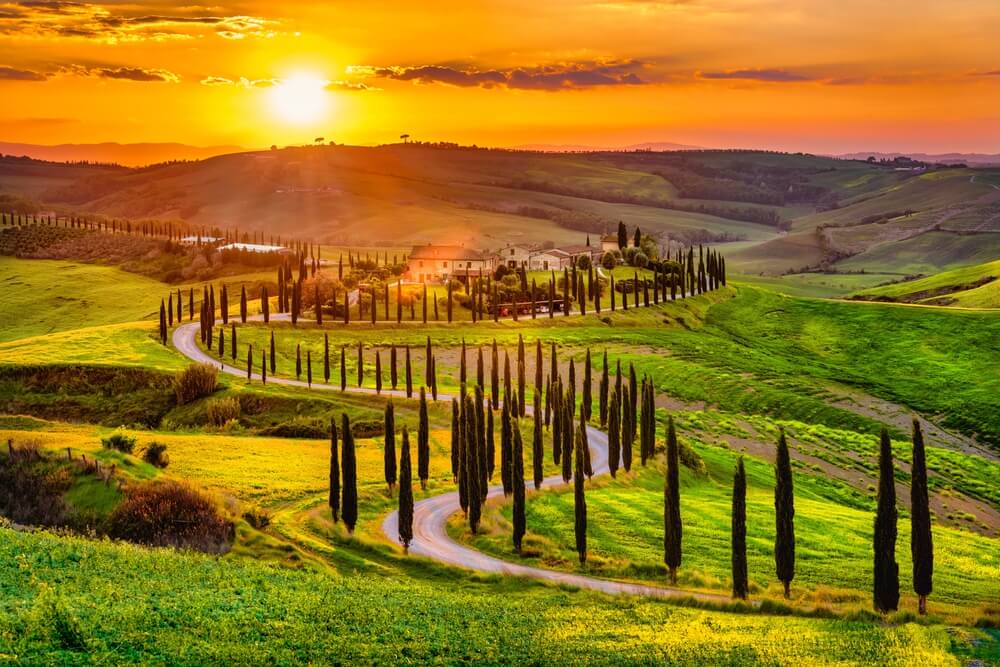
If you’re going to struggle sightseeing with the heat, then consider visiting Tuscany in the Spring or Autumn instead. This is when you’ll find pleasant temperatures making sightseeing more enjoyable (and much less sweaty!). You’ll also find there are fewer crowds so the main tourist sites tend to be quieter too.
However, Autumn in Tuscany is pretty idyllic. Instead of the wildflowers, you’ll find the landscape transformed into a rich tapestry of gold and amber. This is harvest time so expect plenty of sagre and food festivals to be taking place. Temperatures in September and October tend to range between 20°C and 26°C, the crowds are starting to think out and it’s a great time to enjoy a more relaxed vibe to your sightseeing activities.
Finally, don’t rule out visiting Tuscany in the Winter. One of the advantages of visiting Tuscany between November and March is the lack of crowds. Of course, the weather is going to be cooler (and potentially wetter too) but you will find accommodation prices cheaper, the tourist sites quieter and plenty still going on to keep you busy and entertained. There are plenty of Christmas markets in Italy to enjoy in December whilst February in Tuscany is Carnevale season, but expect plenty of seasonal markets and festivals to be taking place whatever month you visit.
How many days do you need in Tuscany?
At Bookings For You, we’ll happily help create a bespoke itinerary for your Tuscany villa holiday. After all, an itinerary will vary dependent on the location of your villa in Tuscany and whether this is your first visit or whether you’re returning seasoned holidaymakers.
3 Days in Tuscany
We think a visit to Florence should feature in any Tuscany holiday itinerary. As a result, if you have 3 days in Tuscany, why not spend the first day in Tuscany’s capital city. Visit some of the key sights such as the Duomo, Ponte Vecchio, Accademia Gallery and the Uffizi Gallery. Enjoy an aperitivo whilst watching the sun set at Piazzale Michelangelo before heading out to dinner to sample the Bistecca alla Fiorentina.
As a contrast from a busy day in the city, spend the second day exploring the Tuscan countryside. Take to the lanes of Chianti-shire to explore the beautiful villages – Gaiole in Chianti, Montefiorelle, Panzano and Radda in Chianti. And make time to stop at one of the wineries to sample Tuscany’s most famous export.
On your last day in Tuscany, we recommend you visit another of our favourite cities in Tuscany – Siena. Arrive early so that you have the opportunity to climb the Torre del Mangia before visiting the beautiful Duomo. There are a number of museums in Siena and with only 3 days in Tuscany, you won’t have time to explore them all so choose wisely. Our favourite is the Museo dell’ Opera. A visit here will also allow you to ascend the spiral staircases to the top of the cathedral complex walls to enjoy some terrific views over the city. If you managed to get to Siena early enough, you should have time to also explore San Gimignano on your final day. It’s only 45 minutes drive between the two. .
Enjoy some gelato at Italy’s most famous gelateria – Gelateria Dondoli – and if you have the stamina for another tower climb, make your way up the Torre Grossa before heading inside to admire the beautiful frescos in the cathedral here.
5 Days in Tuscany
Spend days 1, 2 and 3 in Tuscany in Florence, the Chianti countryside, Siena and San Gimignano respectively.
On day 4, you can then explore Pisa and nearby Lucca. The cities are less than 20 km apart and so can easily be combined in a day. Pisa can get exceptionally busy though, particularly in the peak Summer months so definitely arrive super early before the rest of the crowds. Book your tickets in advance to climb the Leaning Tower of Pisa before heading inside the Baptistery, Duomo and Camposanto Monumentale.
In Lucca, enjoy a walk around the city walls before enjoying an aperitivo in the Piazza Napoleone. Then head to the Piazza dell’Anfiteatro for dinner. There are some ‘tourist traps’ here but you won’t find better food or service than at either L’Angolo Tondo or Sotto Sotto.
Spend your final day back in the Tuscan countryside. Today, we suggest you head to the Val d’Orcia. You should have time to visit at least a couple of the beautiful towns and villages here. These include the ideal Renaissance city, Pienza, along with Montalcino, Montepulciano, Castiglione d’Orcia, San Quirico d’Orcia and Rocca d’Orcia. You may also want to explore Bagno Vignoni where you will find some of Tuscany’s thermal baths.
A week in Tuscany
There are so many ways in which you could spend a week in Tuscany. This is just one suggestion but we’d be happy to put together a bespoke itinerary for you based on the location of your chosen Tuscany villa.
Spend your first day in Pisa. It’s one of Italy’s most iconic cities and it feels like no villa holiday in Tuscany is complete these days without the obligatory photo holding up the leaning tower! On your second day, escape from the city into the Tuscan countryside. Tuscany is famous for the rolling hills, olive groves and vineyards of Chianti. But, if you want to explore a lesser known region of Tuscany, opt instead for a hike in the Monti dell’ Uccellina, home to the Nature Park of the Maremma. This is a protected ecosystem, boasting beautiful landscapes with both environmental and historical significance. Hiking in the area is a must-do. But due to the ecological importance, you do need to stick to the trails and purchase an entry ticket from the Alberese Visitor Centre. Day 3 will take you back into the city, but this time Florence. With so much to see and do in the city, it would take a few days to do it justice. But if you have just one day, we recommend visiting the Ponte Vecchio to capture one of the most famous views of the city before heading to the Uffizi and Duomo. Opt to climb either the dome or the adjacent bell tower. Day 4 sees you back in the countryside, this time enjoying a wine tasting in the Chianti vineyards. And day 5 takes you to Siena. In the heart of Tuscany, Siena boasts some incredible architecture including the Duomo, Pubblico Palace, the tower of Mangia and Santa Maria della Scala. Sip your coffee in the Medieval Piazza del Campo. If you can, consider visiting on a Wednesday if you want to experience the largest market in Tuscany at La Lizza. And last but not least, on your last day in Tuscany, visit some of Tuscany’s smaller medieval hilltop towns. These include San Gimignano with its stunning skyline of towers as well as Cortona, Lucca, Volterra, Montepulciano and Pienza.
10 Days in Tuscany
If you are lucky enough to have 10 days in Tuscany, then you may actually just want to slow down our 7 day Tuscany itinerary and enjoy a slower pace of travel.
However, if you are keen to explore more, then on days 8, 9 and 10 we recommend visiting Maremma region more.
Head inland to enjoy Saturnia’s thermal springs or visit some of Italy’s borghi piu belli. You might then want to consider heading to one of the islands in Tuscany’s archipelago. There are seven major islands in this 166 km stretch of water. These are Capraia, Elba, Giannutri, Giglio, Gorgona, Montecristo and Pianosa. Or perhaps visit the marble quarries at Carrara and learn more about the history of marble production at one of the museums in the town.
14 Days in Tuscany
If you can spare the time, then a 2-week stay in Tuscany allows you to see all the sights in a 10 night stay but enjoy Tuscany at a slower pace.
Stop en route as you drive from A to B, allowing you the opportunity to discover some of Tuscany’s smaller towns and villages. And make sure you take time to just relax and enjoy your chosen Tuscany villa rental.
Visit the local markets and enjoy some experiences. Spending time with the locals is the best way to bring the region to life. Some of our favourite experiences in Tuscany include cooking classes and truffle hunting.
Tuscany holidays for...
Tuscany ticks so many boxes that it can have a broad appeal. Whether you’re 8 or 88, there is something in Tuscany for everyone to enjoy. That said, we do think that some Tuscan destinations are better suited to some more than others…
For Couples
A city break in Tuscany can be a great option for couples. Opt for a stay in Florence or instead choose one of the smaller towns and cities such as San Gimignano, Siena or Cortona.
Alternatively, if you’re looking for a romantic break in Italy, consider the picturesque Chianti countryside. Or opt instead for the beautiful backdrop of the Val d’Orcia and the charming villages of Pienza, Radicofani, San Quirico d’Orcia, Castiglione d’Orcia or Montalcino. Here you can enjoy long evenings chatting over a glass or two of the renowned Brunello di Montalcino
For Families
We recommend renting a villa with pool in Tuscany if you’re holidaying with children. Whilst there is so much to see and do in Tuscany, they will thank you for time spent relaxing poolside! Any of the family-friendly Bookings For You villas in the Tuscan countryside will tick all the boxes when it comes to a family holiday in Tuscany.
Alternatively, why not consider a Tuscany beach holiday. For a family friendly holiday in Tuscany, coastal resorts such as Forte dei Marmi or Viareggio in the north can be a great option. Alternatively, head further south for the more natural and rugged coastline of the southern Etruscan coast. Here, towns such as Follonica and Castiglione della Pescaia have fantastic beaches and plenty of water sports, whilst Elba island offers great opportunities to snorkel in the crystal clear waters that surround it.
Solo Travellers
If travelling solo, we recommend choosing a location with good public transport links. Whilst driving in Tuscany is easy most of the time, it can be stressful if travelling on your own. Instead, we think it’s much more relaxing to go by train. Towns such as Montecatini Terme, Lucca, Siena or Arezzo all have excellent train links and easily accessible train stations. Or, if you are looking to explore the Tuscan coast, you could opt for Livorno and Pisa, both of which have good train connections to Florence as well as to Tuscany’s seaside towns.
Alternatively, if you’re looking to meet others during your travels, a holiday in Florence can be a great option. It’s a lively and welcoming city, making it easy to connect with fellow travellers and experience the city’s culture as part of a larger group.
For Groups
We think that renting a large villa in Tuscany in the heart of the countryside is a great option for groups. You’ll be able to enjoy the privacy and space that a self-catering villa offers.
Consider choosing a villa in Chianti between Florence and Siena. Or head further south to the Val d’Orcia or to the Maremma area.




